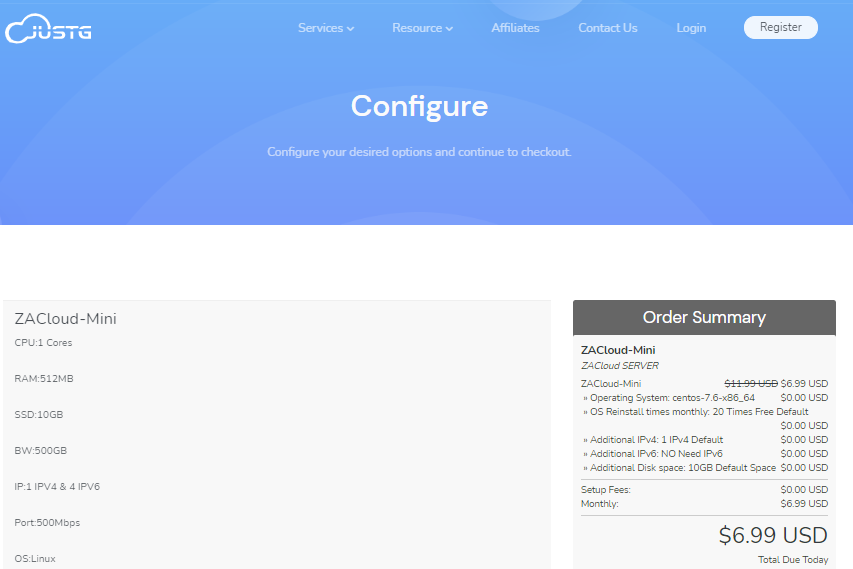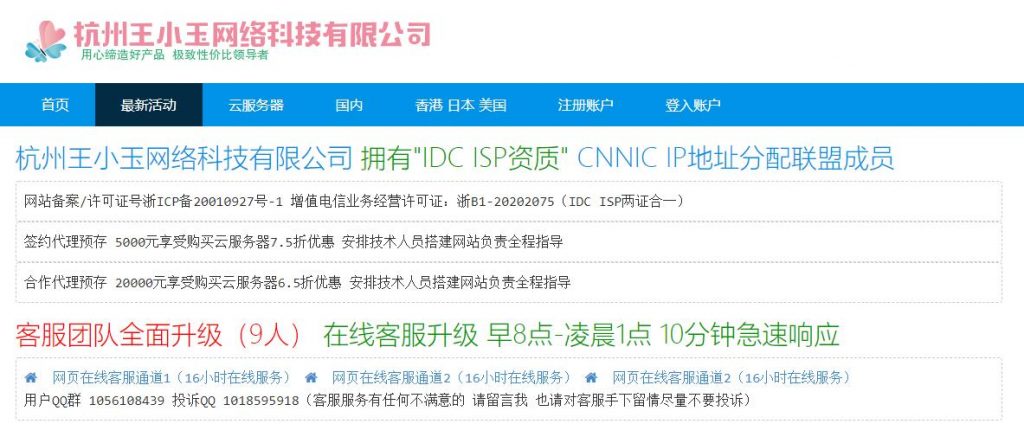embodiedmteam
mteam 时间:2021-01-11 阅读:()
HALId:hal-01467800https://hal.
inria.
fr/hal-01467800Submittedon14Feb2017HALisamulti-disciplinaryopenaccessarchiveforthedepositanddisseminationofsci-entificresearchdocuments,whethertheyarepub-lishedornot.
ThedocumentsmaycomefromteachingandresearchinstitutionsinFranceorabroad,orfrompublicorprivateresearchcenters.
L'archiveouvertepluridisciplinaireHAL,estdestinéeaudéptetàladiffusiondedocumentsscientifiquesdeniveaurecherche,publiésounon,émanantdesétablissementsd'enseignementetderecherchefranaisouétrangers,deslaboratoirespublicsouprivés.
DistributedunderaCreativeCommonsAttribution|4.
0InternationalLicenseOrganizationalAssimilationofTechnologyinaSunriseIndustry–AStoryofSuccessesandFailuresRaviRao,RahulDe'Tocitethisversion:RaviRao,RahulDe'.
OrganizationalAssimilationofTechnologyinaSunriseIndustry–AStoryofSuccessesandFailures.
InternationalWorkingConferenceonTransferandDiffusionofIT(TDIT),Jun2013,Bangalore,India.
pp.
538-554,10.
1007/978-3-642-38862-0_34.
hal-01467800Organizationalassimilationoftechnologyinasunriseindustry-AstoryofsuccessesandfailuresRaviA.
Rao&RahulDeIndianInstituteofManagement,Bangalore,Indiaravi.
rao10@iimb.
ernet.
in,rahul@iimb.
ernot.
inAbstract.
Thestudyanalyzesthecontextualfactorsimpactingtechnologyassimilationinanenvironmentthatischaracterizedbymacro-economicchanges,rapidtechnologicalinnovations,emergingindustrypracticesandshiftingorganizationalcontexts.
Stones'strongstructurationtheory(SST),arefinementofGiddens'structurationtheory,isusedasthetheoreticallensforstudyingthetechnologyassimilationprocess.
SSTisusedtoanalyzethestructurationprocessatthemicro-levelanditsimpactonthestructuresatthemeso/macro-level.
Inaddition,actornetworktheory(ANT)isusedtoanalyzetheroleofheterogeneousactorsinalteringthestructuresastheactornetworkadaptstothetechnologicalinnovationsandchangingcontexts.
Keywords:Structurationtheory,Actornetworktheory,Technologydiffusion,Technologyassimilation1.
IntroductionStudiesoftechnologyinorganizationscanbeclassifiedintotwobroadstreamsofresearch.
Thefirststreamadoptstheontologicalstanceofdiscreteentities;theprimarymechanismofdiffusionbeingthemoderationeffectortechnologyimpact;themethodologybeingvariance-basedstudies;andthekeyconceptsstudiedbeingtechnologicalimperativesorcontingencymodels(Orlikowski&Scott,2008).
Mostoftheearlydiffusionstudiesfallintosuchapositiviststreamofresearchandattempttounderstandtherelationbetweentechnologyandorganizationalcontext,anditsimpactontheinnovationdiffusionprocess.
Thesecondstreamofresearchadoptsanontologicalstancethatassumestechnologyandorganizationsbeingpartofamutuallydependentensemble;theprimarymechanismofdiffusionbeingtheinteractioneffectoftechnologywiththeorganizationalcontextandhumanactors;themethodologybeingprocess-basedstudies;andthekeyconceptsbeingthedualityoftechnologywithtechnologyviewedasbothaphysicalandasocialobject(Orlikowski&Scott,2008).
Amajorityofthestudiesthatfallintothisstreamofresearchfocusontheinterplayoftechnologyandorganization/humanactorsandtheresultantimpactontechnologyandorganizationalstructures.
Whiletechnologyimpactinorganizationshasattractedresearchapproachesfrombothoftheseparadigms,technologyadoptionanddiffusionstudieshaslargelyremainedpositivistinnature.
Fichman(Fichman,2000)pointsoutthelimitationsofthepositiviststreamofresearchinstudyingthelaterstagesoftechnologyassimilationinvolvingformaladoptionandfull-scaledeployment.
Inthispaper,weattempttocontributetothetechnologyassimilationliteraturebyconductingaprocessualstudyofsuchaphenomenonusinganon-positivistparadigm.
Weconductedasingle-casedescriptivestudy(Yin,2009)ofanorganizationadoptingtechnologywhileestablishingitselfintheemergingorganizedretailsectorinIndiaandasnewtechnologicalinnovationsareintroducedintothismarket.
2.
TheoreticalBackgroundWeprovidehereabriefreviewofstructurationtheoryanditsapplicationtothestudyofInformationSystems(IS).
WethenoutlinethelimitationofthistheoryforanalyzingtechnologydiffusionandproposeacombinationofStrongstructurationtheory(SST)withActorNetworktheory(ANT)asthetheoreticalframework.
2.
1.
StructurationTheoryandDiffusionstudiesGiddens'theoryofstructuration(Giddens,1984)hasbeenextensivelyusedinISresearchasameta-theoryforstudyingtheinteractionoftechnologywithorganizations.
Structurationisdefinedas"theknowledgeableactionsofhumanagents[that]discursivelyandrecursivelyformthesetofrules,practicesandroutineswhich,overtimeandspaceconstitutes[.
.
a]structure"(Rose,1998).
Giddensproposesthatstructureandagencyaremutuallyconstitutiveandthatsocialphenomenaareaproductofboth.
Healsointroducesthenotionofdualityofstructuresdescribedthroughthreecomponents:structure(signification,domination,andlegitimation),modality(interpretiveschemes,facility,andnorms)andinteraction(communication,power,andsanctions).
ISresearchthatadoptsstructurationtheorycanbeseentofallintotwocategories:Technologystructuration(Orlikowski,1992)andAdaptiveStructuration(DeSanctis&Poole,1994).
Whilestructurationtheoryisanappropriatelensforstudyinglaterstagesofassimilation(Fichman,2000),itisalsoconstrainedbysomeofitslimitations.
First,structurationtheorybeingameta-theorydoesnotlenditselfwelltoempiricalstudies(Stones,1996)andcanatbestbeconsideredonlyasananalyticalorsensitizingdevice(Giddens,1984).
Secondly,studiesusingstructurationtheorydonotconsidertheevolutionoftechnologyitselfovertime-anaddeddimensionthatmakesthestructure-agencydualitythreedimensionalandnon-linear(Greenhalgh&Stones,2010).
Thirdly,theassumptionofrelativelyhomogeneousactorsposesachallengewhenthescopeofthestudyincludesgroupsofheterogeneousactors.
Whiletheselimitationshavenotposedseriousthreatstomicro-leveladoptionstudies,theyformamajorhindranceforameso/macrolevelstudy,suchasours.
Inthenextsection,weoutlinetheuseofStrongStructurationtheory(SST)andintegrateitwithActorNetworktheory(ANT)toaddressthesechallenges.
2.
2.
StrongStructurationTheoryStrongstructurationtheory(SST)isanadaptationofstructurationtheorydevelopedbyStones(Stones,2005).
SSTadaptsstructurationtheoryforempiricalworkbyintroducingontology-in-situas"observingstructuresandactionbyagentsineverydayoccurrencesofaconjuncture(acriticalcombinationofeventsoroccurrences)"(Greenhalgh&Stones,2010).
SSTdevelopsaquadripartitemodelforstudyingstructurationusingfourcomponents(Fig.
1):1)External-structures:comprisingofacknowledgedorunacknowledged(bytheagent-in-focus)conditionsofactionsthatleadtointendedorunintendedconsequencesthroughindependentcausalinfluencesorirresistibleexternalinfluences(Jack&Kholeif,2007).
2)Internal-structures:representingagent'sgeneral-dispositionthatshedrawsuponandherconjuncturally-specificknowledgethroughtheroleorthepositionoccupiedbyher(Stones,2005).
SSTalsoadoptsCohen'snotionofposition-practices,asetofstructuresandpracticesthatapositionalincumbentcando(Cohen,1989),3)Active-agency:constitutingtheactionstakenbytheagent-in-focusdrawneitherroutinelyorstrategicallyfromtheirinternalstructures(Greenhalgh&Stones,2010).
4)Outcomes:thataretheintendedorunintendedconsequencesasaresultofactive-agencyandleadingtotheexternalandinternalstructuresbeingeitherpreservedorchanged(Jack&Kholeif,2007).
Fig1:QuadripartitemodelofSST-adaptedfrom(Greenhalgh&Stones,2010)Inbrief,SSTsuggeststhatagentsbringingenericcapabilitiesthroughtheirinternaldispositionandspecificknowledge.
Thiscapabilitydetermineshowtheyareexpectedtoactinaconjunctureandthepossibleoutcomeoftheiractions.
However,howtheseagentswillactuallyactinaparticularsituationdependsonahostofotherfactorsthatcannotbedeterminedinadvance:suchastheconstraintsimposedbyexternalstructuresandtheactionsofotheragentsholdingdifferentposition-practices.
TheanalyticframeworkprovidedbySSTisthroughthequadripartitemodelthatallowsthestudyofthestructurationphenomenaatameso-macrolevel,acrossmultipleconjuncturesandinvolvingmultiplesetsofagents-in-focus.
TheSSTframework,however,doesnotaddressthetechnologydimensionexplicitlywhichlimitsitsapplicabilityfordiffusionstudies.
2.
3.
StrongstructurationandActorNetworksDiffusiontheoriesareoftencriticizedofassumingthattechnologiesonceestablishedasbest-practiceswilleffectivelyspreadthroughthepopulation(Briers&Chua,2001).
Actornetworktheory(ANT)ontheotherhandviewsthesuccessorfailureoftechnologyasasocialaccomplishmentofhumanactorsandnon-humanelements(Latour,1987)andadvocatesthatsuchheterogeneousnetworksareinherentlydynamicandunstable.
Stabilityisachievedthroughtheprocessoftranslationthatoccursthroughthefourstagesofa)problematization(issuecausinginstabilityisidentified),b)interessement(otheractorsagreetotheissuebeingaproblem),b)enrollment(mainactorsareassignedrolesandformalliances),andd)mobilization(actornetworkisextendedbeyondtheinitialgroup)(Callon,1986).
Withstability,actornetworksbecome"black-boxes"achievingahighdegreeofirreversibilityandhavingmaterialinscriptions,andwithactorsandactantsassumingtaken-for-grantedstatus(Walsham&Sahay,1999).
Rose(1998)pointsoutthatGiddens'structurationtheorydoesnotaddressthetechnologydimensionsandsuggeststheneedforacarefulcombinationofdiversetheoriesinordertoapplystructurationtotheISdiscipline.
AspecificexampleofsuchacombinationoftheoriesisastudyofGISimplementationinIndia(Walsham&Sahay,1999)thatcombinesstructurationtheory(asasensitizingdevice)andANT(asanempiricaltool).
ConsideringthegapinSST'sanalyticalframeworkandthestrengthofANTasalensforstudyingtechnologydrivenchanges,GreenhalghandStones(2010)suggestintegratingthesetwotheories.
Theydosobyincludingtechnicalactantsintotheirlistofagents-in-focusandexpandingtheconceptofactiveagencytoincludeactionstakenbybothactorsandactantsinasocio-technicalnetwork.
Secondly,theyexpandthedefinitionofinternalstructuresbyincorporatingANT'snotionofmaterialinscriptionsintechnology.
Thustheinternalstructures,whichperSSTincludehumanagentsgeneraldispositionandconjuncturally-specificknowledge,isenhancedtoincludetechnology'smaterialproperties,socio-culturalinscriptionsandtheconjuncturally-specificfunctionalityofthesetechnologies(Greenhalgh&Stones,2010).
TheresultingconceptualmodeldevelopedbythemisdepictedinFig2.
Fig2:SSTwithtechnologydimension-adaptedfrom(Greenhalgh&Stones,2010)Insummary,GreenhalghandStonesadoptionofSSTforstudyingsocio-technicalphenomenaincludeanetworkofposition-practicesthatcomprisesofbothhumanactorsandtechnologies.
Activeagencyinvolvestheuseofspecifictechnologybyhumanactorsinanygivenconjuncture.
Theseactionsareinfluencedbyexternalaswellasinternalforces.
Externalforcesareexertedthroughindependentinstitutional,political,economic,andtechnologicalstructuresandformstheexternalconditionsofactions.
Internalstructuresisembodiedbothbyhumanandtechnologicalagents.
Actionsbyhumanagentsareinfluencedbytheirgeneraldispositionandconjuncturallyspecificknowledgewhiletechnologiesinfluenceactionsthroughtheirmaterialinscriptionsandconjuncturallyspecificfunctionality.
Humanagents,influencedbytheseinternalandexternalconditionsofactions,eitherusethetechnologyfaithfullyorunfaithfully,orrefusetousethetechnologyaltogether.
Suchactions,inturn,reproduceorchangethesocialstructures.
Thisrecursiverelationshipbetweenstructures,agencyandtechnologyisplayedatthemicrolevelintheshort-runandisvisibleatthemeso-macroleveloveralongertimescale.
3.
TheoreticalFramework&MethodFollowingourargumentsintheprevioussectiononthechallengesofconductingatechnologyassimilationstudyandtheapplicabilityofanintegratedSSTandANTlensforconductingsuchastudy,weadopttheguidelinesprovidedbyGreenhalghandStonesasoutlinedinFig3.
Fig3:TheoreticalFrameworkTheanalysisoftheactiveagencyisconductedacrosstheheterogeneoussetofactorsparticipatingineachconjuncture.
Themodifiedstructuresarisingasaresultoftheoutcomeofeachoftheseconjuncturesisthenusedasaninputtothesubsequentconjunctures.
Ourattemptistoconductarecursiveanalysiscomprisingofmicro-mesolevelactionsineachoftheconjuncturesandthenintegratetheanalysisacrossconjuncturestounderstandtherelationshipsbeingplayedoutatmeso-macroleveloverlongertimeduration.
Wefollowacase-studybasedapproachforconductingourempiricalanalysis(Yin,2009).
Thestudywasconductedattheendofthetechnologydiffusionprocessthroughananalysisofhistoricalinformationthatwascollectedthroughsemi-structuredinterviews.
Permissionfromtheseniormanagementoftheorganizationwasobtainedtogainaccesstokeyinformants.
Interviewswereconductedacrossawidebreadthofrolesacrosstheorganizationincludingbusiness-unitheads,group-CIO,ITdepartmentheads,ITdevelopment/operationsteam,store-staff,andenterprise-staff.
Sincethehistoricaldatarequiredwasoveralargeperiodoftime,personnelwhowereemployedwiththeorganizationthroughthisperiodwereincludedintothemixofrespondents.
Interviewslastedbetweenonetothreehours.
Follow-upinterviewwereconductedinafewcases.
Whilenoneoftheinterviewscouldberecorded,detailednotesweretakenforeachoftheinterviews.
Toovercomethechallengesofconductinganempiricalstudyusingstructurationtheory,PozzebonandPinsonneault(2005)recommendnarrativestudiesusingtemporalbracketing.
Forstudiesinvolvingmultiplephases,anarrativestrategyisoftenusedastheprimaryanalysistool:forpreparingthechronologyandsequenceofphases,andtoestablishthelinksbetweenthem(Langley,1999).
Inourstudytoo,weadoptanarrativestrategyapproachconsideringtheneedtofirstdeterminethedifferentphasesofadoptionandthentointerpretthelinksbetweenthedifferentclustersofactorsandthetechnologiesacrossthesephases.
4.
Organization'strystwithtechnologyInthissection,wepresentabriefreportontheorganizationanditsprocessoftechnologyassimilation4.
1.
OrganizationanditsstrategicterrainTheorganization(pseudonymAlpha)isaleadingmulti-formatretailerinIndia.
Alphastartedasatextilemanufacturingcompanyandenteredintotheretailbusinesscirca.
1995duringthepost-liberalizationphaseoftheIndianeconomywhenmodernretailinIndiawasstillatitsinfancy(Sengupta,2008).
Withabuoyanteconomy,theIndianconsumerwasincreasingherspendingandmodernretailpromisedimmensepotential(Srivastava,2008).
Internationally,retailcanbeconsideredasamatureindustrywithestablishedbusinesspracticesandinformationtechnologies.
MostIndianretailfirmspartneredwithinternationalretailersastechnologypartnerswithanobjectiveofbringingthesebusinesspracticesandtechnologiestoIndia.
However,Indianretailerswerenotabletoadopttheseinternationalpracticesowingtocountry-specificchallenges,suchas:lackofqualifiedretailpersonnel,inefficientsupply-chains,aweakITeco-system,lackofunderstandingofconsumerbuyingbehavior,idiosyncrasiesoftheIndianconsumer,andtherequirementsofIndia-specificformats(Dash&Chandy,2009).
Inaddition,functionalityrequiredtohandleMaximumRetailPrice(MRP)whichlegallyprohibitsretailersfromchargingcustomersabovetheMRPwasnotaddressedbymostinternationalretailsoftwaresystems.
Duringthisperiod,IndiaalsohadanestablishedandburgeoningITservicesindustry.
ConfidentabouttheavailabilityofqualifiedITpersonnel,retailersunabletoadoptinternationalsystemschosetodeveloptheirownITsystems.
Indiaisknowntobeanationofshopkeeperswithaproliferationofunorganizedretailers(Kachru,2011).
Thesupply-chainecosysteminIndiaistunedtodeliveringgoodstosuchavastlydistributednetwork(Dholakia,Dholakia,&Chattopadhyay,2012)withmanufacturersledbytheFMCGsectorhavingestablishedlast-milelogisticscapabilities(Sengupta,2008).
Withlast-miledistributioncostsbeingbuiltintotheirpricing,manufacturerswereunwillingtopartwithextramargins.
Whilemulti-storeretailersinIndiaintendedtoset-uptheirowncentralizedwarehouseanddistributionchannelstogainsupply-chainefficiencies,theyusuallystartedoperationsleveragingthedirect-store-deliveryfacilitiesprovidedbyFMCGmanufacturers.
4.
2.
TechnologyadoptionatAlphaInaccordancewiththeprevailingpractices,AlphaalsochosetodevelopitsownITsystemsandimplementedaproductcalledRetailerEnterpriseManagement(REM)duringtheyears1999-2000.
REMfunctionedbothasanenterprisemanagementsystemaswellasthestorefront-endandpoint-of-sale(POS)system.
AlphausedREMasthesoleISformorethanhalfadecadebeforeadoptingSAPtoruntheirenterprisesystems.
Theroll-outofSAPhappenedduring2006-2009withREMcontinuingasthestorePOSsystem.
TheREMsystemwasfinallyretiredandthePOSfunctionmigratedtoaWincorTP-Linuxsystemby2010-2011.
TheadoptionoftechnologyatAlphacanbeclassifiedintothefollowingphasesorconjunctures:a)Conjuncture-1:conceptualizationandinitialadoptionofREM;b)Conjuncture-2:rapidgrowthinscaleofAlpha'sbusinessandassociatedchangestoREM;c)Conjuncture-3:implementationofSAP;andd)Conjuncture-4:retirementofREMandtheimplementationofWincor.
TheprimaryactorsandthetechnologiesparticipatingintheseconjuncturesareasoutlinedinFig.
4.
Fig.
4:Actorswiththeirposition-practicesandinternalstructuresConjuncture1:ThemakingofREManditsinitialadoption.
TheinitialversionoftheITsystememergedasanin-housedevelopedsystemcateringtoalargelystore-focusedfunctionality.
Front-endpromotionmanagementemergedasakeyfunctionality.
Beingadiscountmerchandiser,enticingconsumerswithattractiveofferswasapreferredwayofselling.
Thestoremanagerswouldassesstheconsumers'shoppingneedsandrespondwithimpromptupromotionsbymodifyingthesellingpricethroughback-endupdatestothedatabase.
Inaddition,thecheckoutpersonnelwereoftenallowedtheuseof"manager'spassword",anopen-accessprovisionthatallowedthemtoaltersellingpricetoovercomeanyincorrectsystemupdates.
Indianconsumer'sdemandsareoftenthoughttobecomplex,comprisingofmanyuniquepartsbasedonculturalandlinguisticidentities(Bijapurkar,2009).
Alpha'sbackgroundasanapparelmanufacturermeantasuperiorcapabilityinapparelmerchandising.
However,withdiversificationintomulti-brandretailing,Alphafacedanacuteshortageofcategorymanagementcapabilitiesinnon-apparelmerchandises.
Duringsuchatime,storemanagersshowedleadershipinunderstandingtheconsumerneedsandrecommendedappropriatemerchandises.
Thisresultedinselectiveenterprisefunctionalitiessuchasmaster-data-management(MDM)andmerchandise-receiptfunctionsbeingbuiltasstorefunctionality.
Further,theresultofadoptingdirect-store-deliverypracticesledtoinventorydiscrepanciessuchasduplicateSKUs(stock-keeping-units),SKUswithoutbar-code,multipleMRPs,or`SKUnotfound'(physicalinventorynotenteredinsystem).
Theimpactofsuchdatadiscrepanciesledtobillingerrors,longcheck-outlines,andproductsbilledathigherthanMRP(alegaloffense).
Toovercometheseissues,storestaffoftenusedtoresorttopracticessuchasthoseofmanualbilling,price-overrides,andmanualdatacorrection.
ThetechnologyinfocusduringthisconjunctureistheREMsoftware.
Thematerialpropertyofthissoftwarecanbesummarizedasbeing:highlymalleableandcustomizable,andasastore-specificITsystemwithadditionalenterprisefunctionality.
Thesocio-culturalstructuresinscribedintothistechnologycanbeseenascomprisingofa)promotionfunctionality:reinforcesthebeliefofdiscountmerchandising;b)manager'spassword:stoodforthepoweranddominanceofthestoremanagerandtheopenaccessnatureoftheITsystem;andc)manualbilling:representingthesuspectITecosystem.
Theendofthisconjunctureismarkedbyarapidincreaseinstoresalesandtheemergenceofthestoremanagerasthecentralagentinthisgrowth.
WiththeincreasingdemandofstoresonITmaintenanceactivities,thestoreITteamsizegraduallyincreasedandadualreportingstructureemerged.
Conjuncture2:RapidbusinessgrowthandtheneedforanEnterpriseSystemsTheunfoldingofthisconjunctureoccurredduring2001-2005andwasmarkedbyafewkeychangesintheexternalconditions.
Firstly,ERPsystemssuchasSAPandRetekweremakinginroadsintoIndia.
Secondly,retailerswerenowtryingtoestablishcentralizedwarehousestoachievesupplychainefficienciesandbettermargins(Srivastava,2008).
Thirdly,therewasagrowingexpectationofapolicychangeallowingforeigndirectinvestmentinretail(Mukherjee&Patel,2006).
ThiscreatedurgencyamongIndianretailerstoachievescalebeforetheentryofforeignretailers.
Withtheincreaseinnumberofstores,centralizedenterpriserolessuchasmasterdatamanagement(MDM),buyingandmerchandising(B&M),receiptsanddistribution,andmarketingfunctionsweregainingimportance.
ThedistributednatureoftheREMsystemwarrantedthecreationofanewbusiness-intelligence(BI)functionforconsolidatingdataacrossthestores.
Theentryofthisnewsystemhighlightedmaster-dataandinventoryrelatedissuesresidingintheexistingsystem,suchastheinabilitytoconsolidatedataacrossstoresduetoduplicateSKUcodes.
Further,REMlackedanarchivalfunctionalityleadingtoeverincreasingdatabasesizesandassociatedperformanceissues.
Severeperformanceissueswereoftenaddressedbyaddingmemory/processingpowerandsuspendingback-endfunctionsduringpeakbusinesshours.
Suchadhocmeasureshadacascadingeffectwithfurtherdelaysininventoryreceiptsleadingtofurtherinventoryissues.
Datadiscrepancies,performanceissuesandinefficienciesarisingoutoftheseescalatedtheneedforanenterprise-widesystem.
TheexecutivemanagementteamtookproactivestepstostrengthentheITleadershipbyinductingnewactors.
ThenewITmanagementadvocatedtheneedforreplacingtheenterprisefunctionalityofREMbyERPsystems.
ThePOSfunctionalityofREMwashoweverthoughttobesuitableforbusinessoperations.
Theremovalofenterprisefunctionalityfromthestorewasnotseen,bytheorganizationingeneralandthestoremanagersinspecific,asdowngradingtheresponsibilitiesofthestoremanager.
Instead,itwasseenasreleasingthebandwidthofthestoremanagertobeproductivelyusedinincreasingstoresales.
Conjuncture3:REMasaPOSsystemConjuncture-3unfoldedduring2005-2009withtheroll-outofSAPacrossthebusinessunits.
Duringthistime,organizedretailwasestablishingitselfasamatureindustrywithseveralretailersadoptinginternationalpracticesincludingcentralizedwarehousinganddistribution,spacemanagement,andcategorymanagement.
ThisdurationalsosawtheadvancementofPOStechnologywithintegratedcash-registers,billprinters,barcodescanners,weighingmachinesandsoftware.
TheSAPsystembroughtalongwithitinternationallyacceptedpractices.
Theenterprisestaff,sofarconstrainedbythelimitedfunctionalityofferedbyREM,adoptedSAPwithoutmuchresistance.
However,severalfunctionalitiesinthenewSAPsystemwereincontradictiontothewaytheywereimplementedinREM.
Forexample,theindustrypracticeforpromotionsmanagementwastohavecentralizedpromotionswiththeresponsibilityofdefiningandsettingofthepromotionsresidingwiththeB&Mteam.
However,atAlpha,thestoremanagersweregiventherighttodecideonpromotions.
ThisconflictwasaddressedbyallowingtheB&Mteamcreateheaderlevelpromotions(broadguidelinesonthetypeofsalespromotionpercategory/brand),withtheactualexecutionofthesepromotions(i.
e.
decisiononspecificSKUstobeincludedundertheheader)beingexecutedontheREMPOSsystembyindividualstores.
Sincethefinalcontrolremainedwiththestoremanagers,theheaderlevelpromotionguidelineswereoftennotfollowedfaithfullyandthestoresresortedtofloatingtheirownpromotions.
Thisledtothreesignificantconsequences:a)Alphanoticedaconsiderableleakageintherevenuemarginsduetounauthorizedpromotions;b)ledtoinstancesofpilferageduetotheopen-accesscontrolofREM,andc)non-standardizationofpromotionsacrossstoresleadingtodiscontentamongthecustomers.
Inadditiontothesefunctionalissues,AlphaalsofacedcertaintechnicalchallengeswiththeREMsystem.
ThePOSterminalsdeployedatAlphawereessentiallyacombinationofadesktopcomputerconnectedwithperipherals(barcodescannerandprinter)andrunningonWindowsOS.
Therapidscale-upinthenumberofstoresmeantthatAlphahadnotonlytoinvestinthedesktopsandperipherals,butalsohadtobuylicensesforWindowsandProgressdatabase(requiredforinstallingREM).
ThisresultedinagrowingneedtoadoptnewerPOStechnologiessuchasthosethatranonLinux,whichofferedthepromiseofnotonlyprovidinganintegratedsystembutalsoofbeingcostefficient.
Enterprisestaff,sofarconstrainedbythelimitationsoftheREMsystem,foundtheSAPsystemthatwasinscribedwithindustrybestpracticesasanenablerinmeetingthedemandsofafastmaturingindustry.
However,asnotedabove,manyoftheseinscriptionswereindirectcontradictionwiththoseoftheREMsystem.
WiththeimplementationofSAP,AlphareinforceditsITleadershipteamwithkeypersonnelexperiencedinmanaginginternationalretail-ITproducts.
ThenewleadershipconvincedthedirectorsandotherbusinessheadsontheneedtoretireREMandadoptaninternationalPOSproduct.
ThisconjunctureendswithadecisiontoreplaceREMbyWincorPOSsystem.
Conjuncture4:WincorandOrganizationalchangeThenewITheads,drawingfromtheirpastexperienceinimplementingWincoronaSAPsystem,providedthenecessaryexpertiseindrivingthisprogram.
Aphasedimplementationapproachwasadopted.
IncontrasttotheSAPimplementation,theroll-outofPOSsolutionwasexpectedtohaveamuchgreaterimpactonthelifeatthestore.
Theimpactonthecheckoutstaffwasexpectedtobeminimalwithnetpositivebenefitsgiventhelesserstepstobilling,speediercheckout,fasterresponsetime,graphictouch-screenandother"friendly"features.
However,itwasanticipatedthatthestoremanagerswouldresistthenewsystemastheremovalofaccesstokeyfunctionalitieswouldimpacttheirentrepreneurialempowerment.
Recognizingthesechallenges,Alphadecidedtolaunchanorganizational-changeinitiativeaspartoftheintroductionofthenewPOSsystem.
Theconceptofa"StoreKartha"orthe"headofthefamily"wasintroducedtorepositionthestoremanager.
Thiscanbeseenasanattempttoreconfigurethestoremanager'spositioningasanoverallleaderofthestore.
TheintroductionofthenewPOSsystemwasalsomanagedasaculturalactivity:markinganewbeginningwithnewphilosophy,newmachines,newsoftware,andlaunchedwitha"pooja"(worshipforprosperity).
Theissueofmanagingpromotionsinthenewsystemwascriticaltosuccess.
Thefirstchallengewastheresistanceexpectedbythestoremanagerduetolossofcontrol.
Thiswasaddressedbypositioningthechangeinresponsibilityasmerelytransferringaroutinejob(ofcreatingpromotioncodes)fromthestoretotheback-office.
Themanagementrealizedthattheissuewiththestoreexercisingpromotions(onceconsideredasakeystrength)wasduetotheadhocnatureinwhichitwasbeingperformedthatwasresultinginmarginimpacts.
Shiftingtheactivitytotheback-officewouldleadtothedualadvantageofmakingpromotionmanagementasacentralizedactivityandalsoincorporatefeedbackfromstores.
Theneedtoplanpromotionsinadvancewasportrayedasavalidandreasonableconstraintimposedbythesystem.
AsecondissuefacedwasthelimitedpromotionfunctionalityofferedbySAPascomparedtotheearlierREMsystem.
Thislimitationwasexpectedtomakethetaskofsettingpromotionsmoredifficult.
Adedicatedpromotion-managedteamwasset-uptoensurethatpromotionswereplannedinadvance,feedbacksoughtfromthestoresandimplementedintheSAPsystem.
PilotimplementationofWincorfacedaseriesofchallengesincludingstoreresistanceanddatatransferissuesbetweenSAPandWincor.
Oncetheseissueswereresolved,theimplementationwasrolledoutinoneregion,thentoallregionsunderaformatandsubsequentlytoalltheformats.
5.
AnalysisusingstrongstructurationandactornetworksWenowinterpretthedatafromthecaseusingconceptsfromSSTandANTtodemonstratetheactofstructurationastheorganizationadoptsandassimilatestechnologies.
Table1providesasummaryoftheanalysis.
Conjuncture1ThebroadstrategicterrainunderwhichAlphainitiateditstechnologyadoptioninvolvedtheinfancyoforganizedretailinIndiawiththesupply-chainpredominantlycateringtotheunorganizedmarkets(Mukherjee&Patel,2006).
WhileIndia'seconomywasexperiencingpost-liberalizationbenefitsandIndiawasemergingasaglobalITprovider,theorganizedretailindustryinIndiawasstillinitsinfancywithnomaturepracticesandnotyetreadytoacceptinternationalretailsoftware.
Atamicro-level,wenoticetheactionsofthefoundersandtheseniormanagement,drivenbytheirgeneraldisposition(Indianness)andtheirunderstandingofthestrategicterrain(inappropriateinternationalproducts),leadingtotheadoptionofin-houseITsystems.
Wenoticetheimpactoftheseactionsontheposition-practicesresultingintheemergenceofthestoremanagerasthekeyagent-in-focus.
Wealsonoticehowthesemicro-levelactionsresultedinREMevolvingasadistributedsystemincorporatingenterprisefunctionality.
Workaroundfunctions(suchasmanualoverrides,back-endupdatesetc.
)emergedforcaseswherethetechnologyandagencywerenotaligned.
Practicessuchaspromotions,manualoverrides,andback-endupdatesgotinscribedintotheITsystems.
Overtime,theseinscriptionsassumedataken-for-grantedstatusandbecameawayoffunctioningfortheorganization.
Attheendoftheconjuncture,theactornetworkunderstudygainedstabilityandledtoarapidincreaseinbusiness.
Table1:QuadripartiteelementsofSSTasapplicabletoourstudyQuadripartitieElementsConjuncture1Conjuncture2Conjuncture3Conjuncture4ExternalStructure-Organizedretailnotanestablishedindustry-Opening-upofIndianEconomy-IndiaasaglobalITprovider-InternationalERPproductsenteringIndianmarkets-ImminententryofFDIinRetail-Maturingoforganizedretailpractices-EntryofnewgenerationPOShardware/software-NochangeGeneralDisposition-IndiannessandEntrepreneurship-Nochange-EntryofglobalactorstoITleadershipteam-NochangeConjuncturallyspecificknowledge-Apparelretailer-Lackofmulti-formatretailexpertise-Discountmerchandiser-Nochange-Organizationalscalingneedsenterprisemanagementskills-GlobalITleaderswithpastexperienceinsimilarenvironment-SuccessfulSAPimplementationleadingtotrustininternationalproductsMaterialpropertyandSocialInscriptions-Malleablesoftware-Openaccess-Runtimepromotions-RetailbestpracticesincorporatedinSAP-NochangesinREM'sinscriptions-Conflictbetweenthesetwosetsofinscriptions-OpposinginscriptionsbetweenREMandWincorsystems-Wincorrequiringdesigntimechanges,notasmalleableConjuncturallyspecificfunctionality-Manualbilling-Promotionsmanagement-Enterprisefunctionsatstore-Consolidationacrossstores-Conflictbetweenfront-endandbackendfunctions-NeedforBIfunctionality-Scalabilityandperformanceissues-PromotionsinSAPexecutedunfaithfullyatthestores-Manualbillingleadingtoinventoryissues-Incorrectpromotionsleadingtolossofmargins-IntegratedPOSfunctionalitywithtouch-screenfeatures-Fastercheck-outprocessingtime-LimitedpromotionsfunctionalityConjuncture2Inthisconjuncturewenoticeasignificantchangeinthestrategicterrain:includingtheacceptanceofERPproductsbytheIndianretailers,theopeningupoftheIndianeconomy,andtheimpendingpolicychange.
Atamicro-level,wenoticetechnologicallimitationsleadingtotheadditionofaBIsystemtotheactornetwork.
InANTterminology,thepunctualizedstatethatREMachievedinconjuncture-1getsbrokenwiththeintroductionoftheBIsystem.
TheadditionoftheBIfunctionalityexposedthedeficienciesoftheunderlyingcomponentsofREMincludingPOS,MDMandInventorysystemsleadingtoabreakdownofthenetwork.
TheITdepartmentheads,influencedbythestrategicterrain(needforscaling-upandentryofERP)anddrawingfromtheirconjuncturallyspecificknowledge(alteredactornetwork),advocatetheuseofERPsystems.
Thisresultsinthetranslationoftheactornetworkwiththeinclusionofanewtechnology(SAP)andassociatedactors(enhancedenterpriseroles).
WealsonoticethattheREMPOSsystem,withitssetsofalliesandinscriptions,continuedtobereasonablyfrozen.
Conjuncture3Conjuncture-3unfoldedoveraperiodoffouryearsandsawsomeincrementalchangesinthestrategicterrainwiththeentryofnewgenerationPOSsystems.
Wealsonoticethepolarizationoftheactornetworkintotwoparts:onecenteredonSAPincorporatingenterpriseactors;andtheothercenteredonREMincludingthestoreactors.
Thisleadstoanalteredposition-practice:withtheenterprisestaffsupportedbyasuperiortechnologyfeelingempowered;andtheslightlycompromisedposition-practiceofthestoremanagerwhohadtorelinquishcontrolofseveralactivities.
Theconflictbetweentheinscriptionsofthetwotechnologicalactantsalsosurfacesinthisconjuncture.
Theresultingagencyactionsleadtothefinalbreak-downoftheREMsystem.
ThefailureoftheintegrationlayerbetweenREMandSAP,andtheescalatinglicensingcostsleadstofurtherbreakdownoftheactornetwork.
TheREMPOSsystemthathadthusfarachievedastatusofbeinganimmutablemobileisnowexposedtorevealitsfunctionalandtechnicalcomponents.
WithSAPsysteminplace,theITleadershipteamwasstrengthenedbynewglobalactorswhobroughtwiththemsignificantlydifferentdispositionandknowledge.
Theagencyinitiatedbytheseglobalplayers,drawnfromtheirinternalstructures,theirunderstandingofthemodifiedstrategicterrain,andtheinternalstructuresofotheractors,ledtoactiveproblematizingofthePOSfunctionality.
Enterprisestaffandbusinessleaderswerethenenrolledintothisprocess,leadingtothedecisiontoreplacetheREMsystemswithanewgenerationPOSsystem.
Conjuncture4Therearenoadditionalchangestothebroadstrategicterrainwitnessedinthisconjuncture.
However,thisconjuncturewitnessedaseriesofmicro-levelactionsleadingtoirreversiblechangetotheITlandscapeatAlpha.
TheWincorsystemcamewithfunctionalitythatinscribedinternationallyestablishedpractices,severalofwhichwerecompleteoppositestothoseofREM.
Thus,whiletheWincorsystemwasseentobealignedwiththeSAPnetworkanditsalliedactors,itpotentiallyfacedresistancefromthestoremanagersandwasseenasdentingtheentrepreneurialspiritenjoyedbythem.
EnsuringthestabilityofthenewactornetworkrequiredthealignmentofthestoremanagerswiththeWincorsystem.
Theinternalstructuresofthestoremanagersareseentobedrivenbytheirdispositionofentrepreneurshipandtheirdominantpositionreinforcedoverseveralyears.
TheacceptanceofWincorsystembythestoremanagerrequiredasignificantchangetotheirinternalstructures.
Thiswasachievedbylaunchinganorganizationalchangeinitiative.
TheprocessofintroducingtheWincornetworkwasachievedbyvirtuallyre-launchingthestore,introducingthe"StoreKartha"philosophyandperforming"Pooja"(areligiousceremony).
Theseincidentscanbeseenasanactiveagencytoalterthegeneraldispositionofthestorestaff.
Thus,theoutcomeofconjucture-4canbesummarizedasre-establishingastableactornetworkandanalteredposition-practiceofboththeenterpriseandthestorestaff.
Thisconjunctureismarkedbyagencycarriedoutbyvariousactors:rangingfromtheroleoftheleadershipteamtoalterthedispositionofthestorestaff,re-launchingofthestores,roleofglobalactorsinintroducingnewtechnologyactantswithalignedinscriptions,andtheprocessofaligningthetechnology'sfunction-in-usetothoseoftheactorsneeds.
6.
DISCUSSIONS&CONCLUSIONSInthispaper,wehaveattemptedtostudythetechnologyadoptionbyanorganizationasitestablishesitselfintheemergingretailindustryinIndia.
Ourchoiceofretailindustryprovidesusacontextofanindustrythathasinternationallyestablishedpracticesandmaturetechnologies,butisstillevolvingintheIndiancontext.
Wenoticethattheadoptionoftechnologybytheorganizationisnotjusttheimplementationofmaturetechnologies,butinsteadisaprocessthroughwhichtheorganization"discovers"thesetechnologiesandadaptstoit.
Ourstudyelaboratestheinterplayofheterogeneousactors,evolvingorganizationalcontextsandtechnologiesduringtheadoptionprocess.
Theprimarycontributionofourstudyistodemonstratetheapplicabilityofmacro-levelstructurationprocessinthestudyoftechnologyadoption.
PastISresearchersusingstructurationanalysishavefocusedonmicro-levelphenomenasuchasthestudyofCasetools(Orlikowski,1992),LotusNotes(Karsten,1995),andDecisionSupportsystems(DeSanctis&Poole,1994);ortoexplainadaptationstothedevelopmentprocesssuchasthestudyofglobalvirtualteams(Maznevski&Chudoba,2000)andadaptationtoagilemethodologies(Cao,Kannan,Peng,&Balasubramaniam,2009).
Inourstudy,wedemonstratetheimpactofmicro-levelstructurationprocessbetweentechnologyandhumanactorsunfoldinginanorganizationalandindustrialcontext,andtranslatingintoamacro-levelimpactonthetechnologyassimilationprocess.
Structurationtheoryislimitedinitsusefulnessforconductingmacro-levelstudies.
Ourstudydemonstratesthevalueofstrongstructurationtheoryandactornetworktheory,incombination,forconductingmacro-levelstudiesinvolvinginformationtechnology.
WehaveextendedtheoriginalworkbyStones(2005)andGreenhalghandStones(2010),bydrawingonadditionalANTconceptstoexplaintheagencyactionsarisingoutoftechnologychangeandthesubsequentimpactofactornetworksonorganizationalstructures.
Ourstudyalsoindicatesthatthetechnologyassimilationprocessismorethanjustawareness,adoption,anddeploymentoftechnologies.
Itisanongoingprocessoccurringoveranextendedperiodoftimeandinvolvesaseriesofsuccessesandfailures.
TheprocessweelaboratedissimilartoGersick'spunctuatedequilibriummodel(Gersick,1991)whichviewschangeaslongperiodsofstability(withincrementalchange)andbriefperiodsofrevolutionarychange.
PastISresearchershaveusedtheconceptsofpunctuatedequilibriumtounderstandproblemsofsystem-development(Newman&Robey,1992),virtualteams(Jarvenpaa,Shaw,&Staples,2004),adoptionofnewtechnologies(Loch&Huberman,1999),technology-ledorganizationaltransformation(Orlikowski,1996),tonameafew.
Ourstudycontributestothisliteraturetoestablishtheusefulnessofthepunctuatedequilibriummodeltoamacro-leveltechnologyadoptionprocesswithinanorganization.
Asanimplicationsforpractice,ourstudypointstotheconstantneedforrealigningtechnologywithorganizationneedsasisevidentfromtheactornetworkstogglingbetweenstabilityandinstability.
Ourstudysuggeststhatasuccessfultechnologyatagivenmomentoftimemayoutliveitsutilityinthefuture.
Suchfailuresmaybeasaresultofthemisalignmentoftechnologywithothercontextualfactors.
Theprocessofrealignmentmayneedamultitudeofactivitiessuchasincorporatingnewtechnologies(addingactants),reinforcingleadership(addingnewactors),launchingorganizationalchangeinitiatives(alteringdispositionofkeyactors),andrealigningroles&responsibilities(alteringposition-practices).
Weadoptedagroundedtheoryapproachtoourstudy.
Wegrewatheoreticalbasisaswedevelopedanunderstandingofthephenomena,similartopastcontextualstudiessuchasthoseofWalshamandSahay(1999).
ThechoiceofSSTwasdecidedupononlyduringtheanalysisphases,andtheconjuncturesweredeterminedbylogicallygroupingtheeventsbasedonthetechnology-in-use.
Thisstudywouldbenefitbyadoptingqualitativecodingtechniques(Miles&Huberman,1994;Strauss&Corbin,1990)thatcouldaidintriangulatingtheboundariesoftheconjunctures.
Wehopetoaddressthisasanextensiontothisstudy.
Theextenttowhichwecangeneralizetheresearchfindingsisapossiblelimitationofourstudy.
Aproposedextensiontoourstudyistoincludeadditionalcasesthatinvolveorganizationsthathaveundertakendifferentpathsoftechnologyadoptionundersimilarcontexts.
ThiscouldbedonethroughatheoreticalsamplingofadditionalorganizationsintheretailindustryinIndia,orincludecasesfromotheremergingindustrieswithsimilarcontexts.
7.
REFERENCESBijapurkar,R.
(2009).
Wearelikethatonly:UnderstandingthelogicofconsumerIndia.
PortfolioPenguin.
Briers,M.
,&Chua,W.
F.
(2001).
Theroleofactor-networksandboundaryobjectsinmanagementaccountingchange:afieldstudyofanimplementationofactivity-basedcosting.
Accounting,OrganizationsandSociety,26(3),237-269.
Callon,M.
(1986).
Someelementsofasociologyoftranslation:DomesticationofthescallopsandthefishermanofSt.
BrieneBay.
InJ.
(.
Law,Power,ActionandBeliefANewSociology.
London:Routledge.
Cao,L.
,Kannan,M.
,Peng,X.
,&Balasubramaniam,R.
(2009).
Aframeworkforadaptingagiledevelopmentmethodologies.
EuropeanJournalofInformationSystems,18,332-342.
Cohen,I.
(1989).
StructurationTheory:AnthonyGiddensandtheStructurationofSocialLife.
London:Macmillan.
Dash,M.
,&Chandy,S.
(2009).
AstudyonthechallengesandopportunitiesfacedbyorganizedretailplayersinBangalore.
AvailableatSSRN1435218.
DeSanctis,G.
,&Poole,M.
(1994).
Capturingthecomplexityinadvancedtechnologyuse:adaptivestructurationtheory.
OrganizationScience,2(5),121-147.
Dholakia,N.
,Dholakia,R.
R.
,&Chattopadhyay,A.
(2012).
India'sEmergingRetailSystemsCoexistenceofTraditionandModernity.
JournalofMacromarketing,32(3),252-265.
Fichman,R.
G.
(2000).
Thediffusionandassimilationofinformationtechnologyinnovations.
InFramingthedomainsofITmanagement:Projectingthefuturethroughthepast(pp.
105-128).
Gersick,C.
J.
(1991).
Revolutionarychangetheories:Amultilevelexplorationofthepunctuatedequilibriumparadigm.
Academyofmanagementreview,16(1),10-36.
Giddens,A.
(1984).
TheConstitutionofSociety:OutlineoftheTheoryofStructure.
Berkeley,CA:UniversityofCaliforniaPress.
Greenhalgh,T.
,&Stones,R.
(2010).
TheorisingbigITprogrammesinhealthcare:strongstructurationtheorymeetsactor-networktheory.
SocialScience&Medicine,70(9),1285-1294.
Jack,L.
,&Kholeif,A.
(2007).
Introducingstrongstructurationtheoryforinformingqualitativecasestudiesinorganization,managementandaccountingresearch.
QualitativeResearchinOrganizationsandManagement:AnInternationalJournal,2(3),208-225.
Jarvenpaa,S.
,Shaw,T.
,&Staples,D.
(2004).
TowardContextualizedTheoriesofTrust:TheRoleofTrustinGlobalVirtualTeams.
InformationSystemsResearch,15(3),250-267.
Kachru,U.
(2011).
IndiaLandofaBillionEntrepreneurs.
PearsonEducationIndia.
Karsten,H.
(1995).
It'slikeeveryoneworkingroundthesamedesk:'organizationalreadingsofNotes.
ScandinavianJournalofInformationSystems,7(1),7-34.
Langley,A.
(1999).
Strategiesfortheorizingfromprocessdata.
TheAcademyofManagementReview,24(4),691–711.
Latour,B.
(1987).
Scienceinaction:Howtofollowscientistsandengineersthroughsociety.
HarvardUniversityPress.
Loch,C.
,&Huberman,B.
(1999).
APunctuatedEquilibriumModelofTechnologyDiffusion.
ManagementScience,45(2),160-177.
Maznevski,M.
,&Chudoba,K.
(2000).
Bridgingspaceovertime:GlobalVirtualTeamDynamicsandEffectiveness.
OrganizationScience,11(5),473-492.
Miles,M.
,&Huberman,A.
(1994).
QualitativeDataAnalysis:Anexpandedsourcebook.
ThousandOaks,CA:Sage.
Mukherjee,A.
,&Patel,N.
(2006).
FDIinRetailSector:INDIA:AReportbyICRIERandMinistryofConsumerAffairs,GovernmentofIndia.
AcademicFoundation.
Newman,M.
,&Robey,D.
(1992).
ASocialProcessModelofUser-AnalystRelationships.
MISQuarterly,16(2),249-266.
Orlikowski,W.
J.
(1992).
TheDualityofTechnology:RethinkingtheConceptofTechnologyinOrganizations.
OrganizationScience,3(3),398–427.
Orlikowski,W.
J.
(1996).
Improvisingorganizationaltransformationovertime:Asituatedchangeperspective.
Informationsystemsresearch,7(1),63-92.
Orlikowski,W.
J.
,&Scott,S.
V.
(2008).
Sociomateriality:Challengingtheseparationoftechnology,workandorganization.
TheAcademyofManagementAnnals,2,433–474.
Pozzebon,M.
,&Pinsonneault,A.
(2005).
Challengesinconductingempiricalworkusingstructurationtheory:LearningfromITresearch.
OrganizationStudies,26(9),1353–1376.
Rose,J.
(1998).
Evaluatingthecontributionofstructurationtheorytotheinformationsystemsdiscipline.
6thEuropeanConferenceonInformationSystems.
Granada.
Sengupta,A.
(2008).
EmergenceofmodernIndianretail:anhistoricalperspective.
InternationalJournalofRetail&DistributionManagement,36(9),689-700.
Srivastava,R.
K.
(2008).
ChangingretailsceneinIndia.
InternationalJournalofRetail&DistributionManagement,36(9),714-721.
Stones,R.
(1996).
SociologicalReasoning:TowardsaPast-ModernSociology.
London:Macmillan.
Stones,R.
(2005).
Structurationtheory.
Basingstoke:Palgrave-Macmillan.
Strauss,A.
,&Corbin,J.
(1990).
BasicsofQualitativeResearch:GroundedTheoryProceduresandTechniques.
NewburyPark,CA:Sage.
Walsham,G.
,&Sahay,S.
(1999).
GISforDistrict-LevelAdministrationinIndia:ProblemsandOpportunities.
MISQuarterly,23(1),39-65.
Yin,R.
(2009).
CaseStudyResearch:DesignandMethods(3rded.
).
ThousandOaks,CA:Sage.
inria.
fr/hal-01467800Submittedon14Feb2017HALisamulti-disciplinaryopenaccessarchiveforthedepositanddisseminationofsci-entificresearchdocuments,whethertheyarepub-lishedornot.
ThedocumentsmaycomefromteachingandresearchinstitutionsinFranceorabroad,orfrompublicorprivateresearchcenters.
L'archiveouvertepluridisciplinaireHAL,estdestinéeaudéptetàladiffusiondedocumentsscientifiquesdeniveaurecherche,publiésounon,émanantdesétablissementsd'enseignementetderecherchefranaisouétrangers,deslaboratoirespublicsouprivés.
DistributedunderaCreativeCommonsAttribution|4.
0InternationalLicenseOrganizationalAssimilationofTechnologyinaSunriseIndustry–AStoryofSuccessesandFailuresRaviRao,RahulDe'Tocitethisversion:RaviRao,RahulDe'.
OrganizationalAssimilationofTechnologyinaSunriseIndustry–AStoryofSuccessesandFailures.
InternationalWorkingConferenceonTransferandDiffusionofIT(TDIT),Jun2013,Bangalore,India.
pp.
538-554,10.
1007/978-3-642-38862-0_34.
hal-01467800Organizationalassimilationoftechnologyinasunriseindustry-AstoryofsuccessesandfailuresRaviA.
Rao&RahulDeIndianInstituteofManagement,Bangalore,Indiaravi.
rao10@iimb.
ernet.
in,rahul@iimb.
ernot.
inAbstract.
Thestudyanalyzesthecontextualfactorsimpactingtechnologyassimilationinanenvironmentthatischaracterizedbymacro-economicchanges,rapidtechnologicalinnovations,emergingindustrypracticesandshiftingorganizationalcontexts.
Stones'strongstructurationtheory(SST),arefinementofGiddens'structurationtheory,isusedasthetheoreticallensforstudyingthetechnologyassimilationprocess.
SSTisusedtoanalyzethestructurationprocessatthemicro-levelanditsimpactonthestructuresatthemeso/macro-level.
Inaddition,actornetworktheory(ANT)isusedtoanalyzetheroleofheterogeneousactorsinalteringthestructuresastheactornetworkadaptstothetechnologicalinnovationsandchangingcontexts.
Keywords:Structurationtheory,Actornetworktheory,Technologydiffusion,Technologyassimilation1.
IntroductionStudiesoftechnologyinorganizationscanbeclassifiedintotwobroadstreamsofresearch.
Thefirststreamadoptstheontologicalstanceofdiscreteentities;theprimarymechanismofdiffusionbeingthemoderationeffectortechnologyimpact;themethodologybeingvariance-basedstudies;andthekeyconceptsstudiedbeingtechnologicalimperativesorcontingencymodels(Orlikowski&Scott,2008).
Mostoftheearlydiffusionstudiesfallintosuchapositiviststreamofresearchandattempttounderstandtherelationbetweentechnologyandorganizationalcontext,anditsimpactontheinnovationdiffusionprocess.
Thesecondstreamofresearchadoptsanontologicalstancethatassumestechnologyandorganizationsbeingpartofamutuallydependentensemble;theprimarymechanismofdiffusionbeingtheinteractioneffectoftechnologywiththeorganizationalcontextandhumanactors;themethodologybeingprocess-basedstudies;andthekeyconceptsbeingthedualityoftechnologywithtechnologyviewedasbothaphysicalandasocialobject(Orlikowski&Scott,2008).
Amajorityofthestudiesthatfallintothisstreamofresearchfocusontheinterplayoftechnologyandorganization/humanactorsandtheresultantimpactontechnologyandorganizationalstructures.
Whiletechnologyimpactinorganizationshasattractedresearchapproachesfrombothoftheseparadigms,technologyadoptionanddiffusionstudieshaslargelyremainedpositivistinnature.
Fichman(Fichman,2000)pointsoutthelimitationsofthepositiviststreamofresearchinstudyingthelaterstagesoftechnologyassimilationinvolvingformaladoptionandfull-scaledeployment.
Inthispaper,weattempttocontributetothetechnologyassimilationliteraturebyconductingaprocessualstudyofsuchaphenomenonusinganon-positivistparadigm.
Weconductedasingle-casedescriptivestudy(Yin,2009)ofanorganizationadoptingtechnologywhileestablishingitselfintheemergingorganizedretailsectorinIndiaandasnewtechnologicalinnovationsareintroducedintothismarket.
2.
TheoreticalBackgroundWeprovidehereabriefreviewofstructurationtheoryanditsapplicationtothestudyofInformationSystems(IS).
WethenoutlinethelimitationofthistheoryforanalyzingtechnologydiffusionandproposeacombinationofStrongstructurationtheory(SST)withActorNetworktheory(ANT)asthetheoreticalframework.
2.
1.
StructurationTheoryandDiffusionstudiesGiddens'theoryofstructuration(Giddens,1984)hasbeenextensivelyusedinISresearchasameta-theoryforstudyingtheinteractionoftechnologywithorganizations.
Structurationisdefinedas"theknowledgeableactionsofhumanagents[that]discursivelyandrecursivelyformthesetofrules,practicesandroutineswhich,overtimeandspaceconstitutes[.
.
a]structure"(Rose,1998).
Giddensproposesthatstructureandagencyaremutuallyconstitutiveandthatsocialphenomenaareaproductofboth.
Healsointroducesthenotionofdualityofstructuresdescribedthroughthreecomponents:structure(signification,domination,andlegitimation),modality(interpretiveschemes,facility,andnorms)andinteraction(communication,power,andsanctions).
ISresearchthatadoptsstructurationtheorycanbeseentofallintotwocategories:Technologystructuration(Orlikowski,1992)andAdaptiveStructuration(DeSanctis&Poole,1994).
Whilestructurationtheoryisanappropriatelensforstudyinglaterstagesofassimilation(Fichman,2000),itisalsoconstrainedbysomeofitslimitations.
First,structurationtheorybeingameta-theorydoesnotlenditselfwelltoempiricalstudies(Stones,1996)andcanatbestbeconsideredonlyasananalyticalorsensitizingdevice(Giddens,1984).
Secondly,studiesusingstructurationtheorydonotconsidertheevolutionoftechnologyitselfovertime-anaddeddimensionthatmakesthestructure-agencydualitythreedimensionalandnon-linear(Greenhalgh&Stones,2010).
Thirdly,theassumptionofrelativelyhomogeneousactorsposesachallengewhenthescopeofthestudyincludesgroupsofheterogeneousactors.
Whiletheselimitationshavenotposedseriousthreatstomicro-leveladoptionstudies,theyformamajorhindranceforameso/macrolevelstudy,suchasours.
Inthenextsection,weoutlinetheuseofStrongStructurationtheory(SST)andintegrateitwithActorNetworktheory(ANT)toaddressthesechallenges.
2.
2.
StrongStructurationTheoryStrongstructurationtheory(SST)isanadaptationofstructurationtheorydevelopedbyStones(Stones,2005).
SSTadaptsstructurationtheoryforempiricalworkbyintroducingontology-in-situas"observingstructuresandactionbyagentsineverydayoccurrencesofaconjuncture(acriticalcombinationofeventsoroccurrences)"(Greenhalgh&Stones,2010).
SSTdevelopsaquadripartitemodelforstudyingstructurationusingfourcomponents(Fig.
1):1)External-structures:comprisingofacknowledgedorunacknowledged(bytheagent-in-focus)conditionsofactionsthatleadtointendedorunintendedconsequencesthroughindependentcausalinfluencesorirresistibleexternalinfluences(Jack&Kholeif,2007).
2)Internal-structures:representingagent'sgeneral-dispositionthatshedrawsuponandherconjuncturally-specificknowledgethroughtheroleorthepositionoccupiedbyher(Stones,2005).
SSTalsoadoptsCohen'snotionofposition-practices,asetofstructuresandpracticesthatapositionalincumbentcando(Cohen,1989),3)Active-agency:constitutingtheactionstakenbytheagent-in-focusdrawneitherroutinelyorstrategicallyfromtheirinternalstructures(Greenhalgh&Stones,2010).
4)Outcomes:thataretheintendedorunintendedconsequencesasaresultofactive-agencyandleadingtotheexternalandinternalstructuresbeingeitherpreservedorchanged(Jack&Kholeif,2007).
Fig1:QuadripartitemodelofSST-adaptedfrom(Greenhalgh&Stones,2010)Inbrief,SSTsuggeststhatagentsbringingenericcapabilitiesthroughtheirinternaldispositionandspecificknowledge.
Thiscapabilitydetermineshowtheyareexpectedtoactinaconjunctureandthepossibleoutcomeoftheiractions.
However,howtheseagentswillactuallyactinaparticularsituationdependsonahostofotherfactorsthatcannotbedeterminedinadvance:suchastheconstraintsimposedbyexternalstructuresandtheactionsofotheragentsholdingdifferentposition-practices.
TheanalyticframeworkprovidedbySSTisthroughthequadripartitemodelthatallowsthestudyofthestructurationphenomenaatameso-macrolevel,acrossmultipleconjuncturesandinvolvingmultiplesetsofagents-in-focus.
TheSSTframework,however,doesnotaddressthetechnologydimensionexplicitlywhichlimitsitsapplicabilityfordiffusionstudies.
2.
3.
StrongstructurationandActorNetworksDiffusiontheoriesareoftencriticizedofassumingthattechnologiesonceestablishedasbest-practiceswilleffectivelyspreadthroughthepopulation(Briers&Chua,2001).
Actornetworktheory(ANT)ontheotherhandviewsthesuccessorfailureoftechnologyasasocialaccomplishmentofhumanactorsandnon-humanelements(Latour,1987)andadvocatesthatsuchheterogeneousnetworksareinherentlydynamicandunstable.
Stabilityisachievedthroughtheprocessoftranslationthatoccursthroughthefourstagesofa)problematization(issuecausinginstabilityisidentified),b)interessement(otheractorsagreetotheissuebeingaproblem),b)enrollment(mainactorsareassignedrolesandformalliances),andd)mobilization(actornetworkisextendedbeyondtheinitialgroup)(Callon,1986).
Withstability,actornetworksbecome"black-boxes"achievingahighdegreeofirreversibilityandhavingmaterialinscriptions,andwithactorsandactantsassumingtaken-for-grantedstatus(Walsham&Sahay,1999).
Rose(1998)pointsoutthatGiddens'structurationtheorydoesnotaddressthetechnologydimensionsandsuggeststheneedforacarefulcombinationofdiversetheoriesinordertoapplystructurationtotheISdiscipline.
AspecificexampleofsuchacombinationoftheoriesisastudyofGISimplementationinIndia(Walsham&Sahay,1999)thatcombinesstructurationtheory(asasensitizingdevice)andANT(asanempiricaltool).
ConsideringthegapinSST'sanalyticalframeworkandthestrengthofANTasalensforstudyingtechnologydrivenchanges,GreenhalghandStones(2010)suggestintegratingthesetwotheories.
Theydosobyincludingtechnicalactantsintotheirlistofagents-in-focusandexpandingtheconceptofactiveagencytoincludeactionstakenbybothactorsandactantsinasocio-technicalnetwork.
Secondly,theyexpandthedefinitionofinternalstructuresbyincorporatingANT'snotionofmaterialinscriptionsintechnology.
Thustheinternalstructures,whichperSSTincludehumanagentsgeneraldispositionandconjuncturally-specificknowledge,isenhancedtoincludetechnology'smaterialproperties,socio-culturalinscriptionsandtheconjuncturally-specificfunctionalityofthesetechnologies(Greenhalgh&Stones,2010).
TheresultingconceptualmodeldevelopedbythemisdepictedinFig2.
Fig2:SSTwithtechnologydimension-adaptedfrom(Greenhalgh&Stones,2010)Insummary,GreenhalghandStonesadoptionofSSTforstudyingsocio-technicalphenomenaincludeanetworkofposition-practicesthatcomprisesofbothhumanactorsandtechnologies.
Activeagencyinvolvestheuseofspecifictechnologybyhumanactorsinanygivenconjuncture.
Theseactionsareinfluencedbyexternalaswellasinternalforces.
Externalforcesareexertedthroughindependentinstitutional,political,economic,andtechnologicalstructuresandformstheexternalconditionsofactions.
Internalstructuresisembodiedbothbyhumanandtechnologicalagents.
Actionsbyhumanagentsareinfluencedbytheirgeneraldispositionandconjuncturallyspecificknowledgewhiletechnologiesinfluenceactionsthroughtheirmaterialinscriptionsandconjuncturallyspecificfunctionality.
Humanagents,influencedbytheseinternalandexternalconditionsofactions,eitherusethetechnologyfaithfullyorunfaithfully,orrefusetousethetechnologyaltogether.
Suchactions,inturn,reproduceorchangethesocialstructures.
Thisrecursiverelationshipbetweenstructures,agencyandtechnologyisplayedatthemicrolevelintheshort-runandisvisibleatthemeso-macroleveloveralongertimescale.
3.
TheoreticalFramework&MethodFollowingourargumentsintheprevioussectiononthechallengesofconductingatechnologyassimilationstudyandtheapplicabilityofanintegratedSSTandANTlensforconductingsuchastudy,weadopttheguidelinesprovidedbyGreenhalghandStonesasoutlinedinFig3.
Fig3:TheoreticalFrameworkTheanalysisoftheactiveagencyisconductedacrosstheheterogeneoussetofactorsparticipatingineachconjuncture.
Themodifiedstructuresarisingasaresultoftheoutcomeofeachoftheseconjuncturesisthenusedasaninputtothesubsequentconjunctures.
Ourattemptistoconductarecursiveanalysiscomprisingofmicro-mesolevelactionsineachoftheconjuncturesandthenintegratetheanalysisacrossconjuncturestounderstandtherelationshipsbeingplayedoutatmeso-macroleveloverlongertimeduration.
Wefollowacase-studybasedapproachforconductingourempiricalanalysis(Yin,2009).
Thestudywasconductedattheendofthetechnologydiffusionprocessthroughananalysisofhistoricalinformationthatwascollectedthroughsemi-structuredinterviews.
Permissionfromtheseniormanagementoftheorganizationwasobtainedtogainaccesstokeyinformants.
Interviewswereconductedacrossawidebreadthofrolesacrosstheorganizationincludingbusiness-unitheads,group-CIO,ITdepartmentheads,ITdevelopment/operationsteam,store-staff,andenterprise-staff.
Sincethehistoricaldatarequiredwasoveralargeperiodoftime,personnelwhowereemployedwiththeorganizationthroughthisperiodwereincludedintothemixofrespondents.
Interviewslastedbetweenonetothreehours.
Follow-upinterviewwereconductedinafewcases.
Whilenoneoftheinterviewscouldberecorded,detailednotesweretakenforeachoftheinterviews.
Toovercomethechallengesofconductinganempiricalstudyusingstructurationtheory,PozzebonandPinsonneault(2005)recommendnarrativestudiesusingtemporalbracketing.
Forstudiesinvolvingmultiplephases,anarrativestrategyisoftenusedastheprimaryanalysistool:forpreparingthechronologyandsequenceofphases,andtoestablishthelinksbetweenthem(Langley,1999).
Inourstudytoo,weadoptanarrativestrategyapproachconsideringtheneedtofirstdeterminethedifferentphasesofadoptionandthentointerpretthelinksbetweenthedifferentclustersofactorsandthetechnologiesacrossthesephases.
4.
Organization'strystwithtechnologyInthissection,wepresentabriefreportontheorganizationanditsprocessoftechnologyassimilation4.
1.
OrganizationanditsstrategicterrainTheorganization(pseudonymAlpha)isaleadingmulti-formatretailerinIndia.
Alphastartedasatextilemanufacturingcompanyandenteredintotheretailbusinesscirca.
1995duringthepost-liberalizationphaseoftheIndianeconomywhenmodernretailinIndiawasstillatitsinfancy(Sengupta,2008).
Withabuoyanteconomy,theIndianconsumerwasincreasingherspendingandmodernretailpromisedimmensepotential(Srivastava,2008).
Internationally,retailcanbeconsideredasamatureindustrywithestablishedbusinesspracticesandinformationtechnologies.
MostIndianretailfirmspartneredwithinternationalretailersastechnologypartnerswithanobjectiveofbringingthesebusinesspracticesandtechnologiestoIndia.
However,Indianretailerswerenotabletoadopttheseinternationalpracticesowingtocountry-specificchallenges,suchas:lackofqualifiedretailpersonnel,inefficientsupply-chains,aweakITeco-system,lackofunderstandingofconsumerbuyingbehavior,idiosyncrasiesoftheIndianconsumer,andtherequirementsofIndia-specificformats(Dash&Chandy,2009).
Inaddition,functionalityrequiredtohandleMaximumRetailPrice(MRP)whichlegallyprohibitsretailersfromchargingcustomersabovetheMRPwasnotaddressedbymostinternationalretailsoftwaresystems.
Duringthisperiod,IndiaalsohadanestablishedandburgeoningITservicesindustry.
ConfidentabouttheavailabilityofqualifiedITpersonnel,retailersunabletoadoptinternationalsystemschosetodeveloptheirownITsystems.
Indiaisknowntobeanationofshopkeeperswithaproliferationofunorganizedretailers(Kachru,2011).
Thesupply-chainecosysteminIndiaistunedtodeliveringgoodstosuchavastlydistributednetwork(Dholakia,Dholakia,&Chattopadhyay,2012)withmanufacturersledbytheFMCGsectorhavingestablishedlast-milelogisticscapabilities(Sengupta,2008).
Withlast-miledistributioncostsbeingbuiltintotheirpricing,manufacturerswereunwillingtopartwithextramargins.
Whilemulti-storeretailersinIndiaintendedtoset-uptheirowncentralizedwarehouseanddistributionchannelstogainsupply-chainefficiencies,theyusuallystartedoperationsleveragingthedirect-store-deliveryfacilitiesprovidedbyFMCGmanufacturers.
4.
2.
TechnologyadoptionatAlphaInaccordancewiththeprevailingpractices,AlphaalsochosetodevelopitsownITsystemsandimplementedaproductcalledRetailerEnterpriseManagement(REM)duringtheyears1999-2000.
REMfunctionedbothasanenterprisemanagementsystemaswellasthestorefront-endandpoint-of-sale(POS)system.
AlphausedREMasthesoleISformorethanhalfadecadebeforeadoptingSAPtoruntheirenterprisesystems.
Theroll-outofSAPhappenedduring2006-2009withREMcontinuingasthestorePOSsystem.
TheREMsystemwasfinallyretiredandthePOSfunctionmigratedtoaWincorTP-Linuxsystemby2010-2011.
TheadoptionoftechnologyatAlphacanbeclassifiedintothefollowingphasesorconjunctures:a)Conjuncture-1:conceptualizationandinitialadoptionofREM;b)Conjuncture-2:rapidgrowthinscaleofAlpha'sbusinessandassociatedchangestoREM;c)Conjuncture-3:implementationofSAP;andd)Conjuncture-4:retirementofREMandtheimplementationofWincor.
TheprimaryactorsandthetechnologiesparticipatingintheseconjuncturesareasoutlinedinFig.
4.
Fig.
4:Actorswiththeirposition-practicesandinternalstructuresConjuncture1:ThemakingofREManditsinitialadoption.
TheinitialversionoftheITsystememergedasanin-housedevelopedsystemcateringtoalargelystore-focusedfunctionality.
Front-endpromotionmanagementemergedasakeyfunctionality.
Beingadiscountmerchandiser,enticingconsumerswithattractiveofferswasapreferredwayofselling.
Thestoremanagerswouldassesstheconsumers'shoppingneedsandrespondwithimpromptupromotionsbymodifyingthesellingpricethroughback-endupdatestothedatabase.
Inaddition,thecheckoutpersonnelwereoftenallowedtheuseof"manager'spassword",anopen-accessprovisionthatallowedthemtoaltersellingpricetoovercomeanyincorrectsystemupdates.
Indianconsumer'sdemandsareoftenthoughttobecomplex,comprisingofmanyuniquepartsbasedonculturalandlinguisticidentities(Bijapurkar,2009).
Alpha'sbackgroundasanapparelmanufacturermeantasuperiorcapabilityinapparelmerchandising.
However,withdiversificationintomulti-brandretailing,Alphafacedanacuteshortageofcategorymanagementcapabilitiesinnon-apparelmerchandises.
Duringsuchatime,storemanagersshowedleadershipinunderstandingtheconsumerneedsandrecommendedappropriatemerchandises.
Thisresultedinselectiveenterprisefunctionalitiessuchasmaster-data-management(MDM)andmerchandise-receiptfunctionsbeingbuiltasstorefunctionality.
Further,theresultofadoptingdirect-store-deliverypracticesledtoinventorydiscrepanciessuchasduplicateSKUs(stock-keeping-units),SKUswithoutbar-code,multipleMRPs,or`SKUnotfound'(physicalinventorynotenteredinsystem).
Theimpactofsuchdatadiscrepanciesledtobillingerrors,longcheck-outlines,andproductsbilledathigherthanMRP(alegaloffense).
Toovercometheseissues,storestaffoftenusedtoresorttopracticessuchasthoseofmanualbilling,price-overrides,andmanualdatacorrection.
ThetechnologyinfocusduringthisconjunctureistheREMsoftware.
Thematerialpropertyofthissoftwarecanbesummarizedasbeing:highlymalleableandcustomizable,andasastore-specificITsystemwithadditionalenterprisefunctionality.
Thesocio-culturalstructuresinscribedintothistechnologycanbeseenascomprisingofa)promotionfunctionality:reinforcesthebeliefofdiscountmerchandising;b)manager'spassword:stoodforthepoweranddominanceofthestoremanagerandtheopenaccessnatureoftheITsystem;andc)manualbilling:representingthesuspectITecosystem.
Theendofthisconjunctureismarkedbyarapidincreaseinstoresalesandtheemergenceofthestoremanagerasthecentralagentinthisgrowth.
WiththeincreasingdemandofstoresonITmaintenanceactivities,thestoreITteamsizegraduallyincreasedandadualreportingstructureemerged.
Conjuncture2:RapidbusinessgrowthandtheneedforanEnterpriseSystemsTheunfoldingofthisconjunctureoccurredduring2001-2005andwasmarkedbyafewkeychangesintheexternalconditions.
Firstly,ERPsystemssuchasSAPandRetekweremakinginroadsintoIndia.
Secondly,retailerswerenowtryingtoestablishcentralizedwarehousestoachievesupplychainefficienciesandbettermargins(Srivastava,2008).
Thirdly,therewasagrowingexpectationofapolicychangeallowingforeigndirectinvestmentinretail(Mukherjee&Patel,2006).
ThiscreatedurgencyamongIndianretailerstoachievescalebeforetheentryofforeignretailers.
Withtheincreaseinnumberofstores,centralizedenterpriserolessuchasmasterdatamanagement(MDM),buyingandmerchandising(B&M),receiptsanddistribution,andmarketingfunctionsweregainingimportance.
ThedistributednatureoftheREMsystemwarrantedthecreationofanewbusiness-intelligence(BI)functionforconsolidatingdataacrossthestores.
Theentryofthisnewsystemhighlightedmaster-dataandinventoryrelatedissuesresidingintheexistingsystem,suchastheinabilitytoconsolidatedataacrossstoresduetoduplicateSKUcodes.
Further,REMlackedanarchivalfunctionalityleadingtoeverincreasingdatabasesizesandassociatedperformanceissues.
Severeperformanceissueswereoftenaddressedbyaddingmemory/processingpowerandsuspendingback-endfunctionsduringpeakbusinesshours.
Suchadhocmeasureshadacascadingeffectwithfurtherdelaysininventoryreceiptsleadingtofurtherinventoryissues.
Datadiscrepancies,performanceissuesandinefficienciesarisingoutoftheseescalatedtheneedforanenterprise-widesystem.
TheexecutivemanagementteamtookproactivestepstostrengthentheITleadershipbyinductingnewactors.
ThenewITmanagementadvocatedtheneedforreplacingtheenterprisefunctionalityofREMbyERPsystems.
ThePOSfunctionalityofREMwashoweverthoughttobesuitableforbusinessoperations.
Theremovalofenterprisefunctionalityfromthestorewasnotseen,bytheorganizationingeneralandthestoremanagersinspecific,asdowngradingtheresponsibilitiesofthestoremanager.
Instead,itwasseenasreleasingthebandwidthofthestoremanagertobeproductivelyusedinincreasingstoresales.
Conjuncture3:REMasaPOSsystemConjuncture-3unfoldedduring2005-2009withtheroll-outofSAPacrossthebusinessunits.
Duringthistime,organizedretailwasestablishingitselfasamatureindustrywithseveralretailersadoptinginternationalpracticesincludingcentralizedwarehousinganddistribution,spacemanagement,andcategorymanagement.
ThisdurationalsosawtheadvancementofPOStechnologywithintegratedcash-registers,billprinters,barcodescanners,weighingmachinesandsoftware.
TheSAPsystembroughtalongwithitinternationallyacceptedpractices.
Theenterprisestaff,sofarconstrainedbythelimitedfunctionalityofferedbyREM,adoptedSAPwithoutmuchresistance.
However,severalfunctionalitiesinthenewSAPsystemwereincontradictiontothewaytheywereimplementedinREM.
Forexample,theindustrypracticeforpromotionsmanagementwastohavecentralizedpromotionswiththeresponsibilityofdefiningandsettingofthepromotionsresidingwiththeB&Mteam.
However,atAlpha,thestoremanagersweregiventherighttodecideonpromotions.
ThisconflictwasaddressedbyallowingtheB&Mteamcreateheaderlevelpromotions(broadguidelinesonthetypeofsalespromotionpercategory/brand),withtheactualexecutionofthesepromotions(i.
e.
decisiononspecificSKUstobeincludedundertheheader)beingexecutedontheREMPOSsystembyindividualstores.
Sincethefinalcontrolremainedwiththestoremanagers,theheaderlevelpromotionguidelineswereoftennotfollowedfaithfullyandthestoresresortedtofloatingtheirownpromotions.
Thisledtothreesignificantconsequences:a)Alphanoticedaconsiderableleakageintherevenuemarginsduetounauthorizedpromotions;b)ledtoinstancesofpilferageduetotheopen-accesscontrolofREM,andc)non-standardizationofpromotionsacrossstoresleadingtodiscontentamongthecustomers.
Inadditiontothesefunctionalissues,AlphaalsofacedcertaintechnicalchallengeswiththeREMsystem.
ThePOSterminalsdeployedatAlphawereessentiallyacombinationofadesktopcomputerconnectedwithperipherals(barcodescannerandprinter)andrunningonWindowsOS.
Therapidscale-upinthenumberofstoresmeantthatAlphahadnotonlytoinvestinthedesktopsandperipherals,butalsohadtobuylicensesforWindowsandProgressdatabase(requiredforinstallingREM).
ThisresultedinagrowingneedtoadoptnewerPOStechnologiessuchasthosethatranonLinux,whichofferedthepromiseofnotonlyprovidinganintegratedsystembutalsoofbeingcostefficient.
Enterprisestaff,sofarconstrainedbythelimitationsoftheREMsystem,foundtheSAPsystemthatwasinscribedwithindustrybestpracticesasanenablerinmeetingthedemandsofafastmaturingindustry.
However,asnotedabove,manyoftheseinscriptionswereindirectcontradictionwiththoseoftheREMsystem.
WiththeimplementationofSAP,AlphareinforceditsITleadershipteamwithkeypersonnelexperiencedinmanaginginternationalretail-ITproducts.
ThenewleadershipconvincedthedirectorsandotherbusinessheadsontheneedtoretireREMandadoptaninternationalPOSproduct.
ThisconjunctureendswithadecisiontoreplaceREMbyWincorPOSsystem.
Conjuncture4:WincorandOrganizationalchangeThenewITheads,drawingfromtheirpastexperienceinimplementingWincoronaSAPsystem,providedthenecessaryexpertiseindrivingthisprogram.
Aphasedimplementationapproachwasadopted.
IncontrasttotheSAPimplementation,theroll-outofPOSsolutionwasexpectedtohaveamuchgreaterimpactonthelifeatthestore.
Theimpactonthecheckoutstaffwasexpectedtobeminimalwithnetpositivebenefitsgiventhelesserstepstobilling,speediercheckout,fasterresponsetime,graphictouch-screenandother"friendly"features.
However,itwasanticipatedthatthestoremanagerswouldresistthenewsystemastheremovalofaccesstokeyfunctionalitieswouldimpacttheirentrepreneurialempowerment.
Recognizingthesechallenges,Alphadecidedtolaunchanorganizational-changeinitiativeaspartoftheintroductionofthenewPOSsystem.
Theconceptofa"StoreKartha"orthe"headofthefamily"wasintroducedtorepositionthestoremanager.
Thiscanbeseenasanattempttoreconfigurethestoremanager'spositioningasanoverallleaderofthestore.
TheintroductionofthenewPOSsystemwasalsomanagedasaculturalactivity:markinganewbeginningwithnewphilosophy,newmachines,newsoftware,andlaunchedwitha"pooja"(worshipforprosperity).
Theissueofmanagingpromotionsinthenewsystemwascriticaltosuccess.
Thefirstchallengewastheresistanceexpectedbythestoremanagerduetolossofcontrol.
Thiswasaddressedbypositioningthechangeinresponsibilityasmerelytransferringaroutinejob(ofcreatingpromotioncodes)fromthestoretotheback-office.
Themanagementrealizedthattheissuewiththestoreexercisingpromotions(onceconsideredasakeystrength)wasduetotheadhocnatureinwhichitwasbeingperformedthatwasresultinginmarginimpacts.
Shiftingtheactivitytotheback-officewouldleadtothedualadvantageofmakingpromotionmanagementasacentralizedactivityandalsoincorporatefeedbackfromstores.
Theneedtoplanpromotionsinadvancewasportrayedasavalidandreasonableconstraintimposedbythesystem.
AsecondissuefacedwasthelimitedpromotionfunctionalityofferedbySAPascomparedtotheearlierREMsystem.
Thislimitationwasexpectedtomakethetaskofsettingpromotionsmoredifficult.
Adedicatedpromotion-managedteamwasset-uptoensurethatpromotionswereplannedinadvance,feedbacksoughtfromthestoresandimplementedintheSAPsystem.
PilotimplementationofWincorfacedaseriesofchallengesincludingstoreresistanceanddatatransferissuesbetweenSAPandWincor.
Oncetheseissueswereresolved,theimplementationwasrolledoutinoneregion,thentoallregionsunderaformatandsubsequentlytoalltheformats.
5.
AnalysisusingstrongstructurationandactornetworksWenowinterpretthedatafromthecaseusingconceptsfromSSTandANTtodemonstratetheactofstructurationastheorganizationadoptsandassimilatestechnologies.
Table1providesasummaryoftheanalysis.
Conjuncture1ThebroadstrategicterrainunderwhichAlphainitiateditstechnologyadoptioninvolvedtheinfancyoforganizedretailinIndiawiththesupply-chainpredominantlycateringtotheunorganizedmarkets(Mukherjee&Patel,2006).
WhileIndia'seconomywasexperiencingpost-liberalizationbenefitsandIndiawasemergingasaglobalITprovider,theorganizedretailindustryinIndiawasstillinitsinfancywithnomaturepracticesandnotyetreadytoacceptinternationalretailsoftware.
Atamicro-level,wenoticetheactionsofthefoundersandtheseniormanagement,drivenbytheirgeneraldisposition(Indianness)andtheirunderstandingofthestrategicterrain(inappropriateinternationalproducts),leadingtotheadoptionofin-houseITsystems.
Wenoticetheimpactoftheseactionsontheposition-practicesresultingintheemergenceofthestoremanagerasthekeyagent-in-focus.
Wealsonoticehowthesemicro-levelactionsresultedinREMevolvingasadistributedsystemincorporatingenterprisefunctionality.
Workaroundfunctions(suchasmanualoverrides,back-endupdatesetc.
)emergedforcaseswherethetechnologyandagencywerenotaligned.
Practicessuchaspromotions,manualoverrides,andback-endupdatesgotinscribedintotheITsystems.
Overtime,theseinscriptionsassumedataken-for-grantedstatusandbecameawayoffunctioningfortheorganization.
Attheendoftheconjuncture,theactornetworkunderstudygainedstabilityandledtoarapidincreaseinbusiness.
Table1:QuadripartiteelementsofSSTasapplicabletoourstudyQuadripartitieElementsConjuncture1Conjuncture2Conjuncture3Conjuncture4ExternalStructure-Organizedretailnotanestablishedindustry-Opening-upofIndianEconomy-IndiaasaglobalITprovider-InternationalERPproductsenteringIndianmarkets-ImminententryofFDIinRetail-Maturingoforganizedretailpractices-EntryofnewgenerationPOShardware/software-NochangeGeneralDisposition-IndiannessandEntrepreneurship-Nochange-EntryofglobalactorstoITleadershipteam-NochangeConjuncturallyspecificknowledge-Apparelretailer-Lackofmulti-formatretailexpertise-Discountmerchandiser-Nochange-Organizationalscalingneedsenterprisemanagementskills-GlobalITleaderswithpastexperienceinsimilarenvironment-SuccessfulSAPimplementationleadingtotrustininternationalproductsMaterialpropertyandSocialInscriptions-Malleablesoftware-Openaccess-Runtimepromotions-RetailbestpracticesincorporatedinSAP-NochangesinREM'sinscriptions-Conflictbetweenthesetwosetsofinscriptions-OpposinginscriptionsbetweenREMandWincorsystems-Wincorrequiringdesigntimechanges,notasmalleableConjuncturallyspecificfunctionality-Manualbilling-Promotionsmanagement-Enterprisefunctionsatstore-Consolidationacrossstores-Conflictbetweenfront-endandbackendfunctions-NeedforBIfunctionality-Scalabilityandperformanceissues-PromotionsinSAPexecutedunfaithfullyatthestores-Manualbillingleadingtoinventoryissues-Incorrectpromotionsleadingtolossofmargins-IntegratedPOSfunctionalitywithtouch-screenfeatures-Fastercheck-outprocessingtime-LimitedpromotionsfunctionalityConjuncture2Inthisconjuncturewenoticeasignificantchangeinthestrategicterrain:includingtheacceptanceofERPproductsbytheIndianretailers,theopeningupoftheIndianeconomy,andtheimpendingpolicychange.
Atamicro-level,wenoticetechnologicallimitationsleadingtotheadditionofaBIsystemtotheactornetwork.
InANTterminology,thepunctualizedstatethatREMachievedinconjuncture-1getsbrokenwiththeintroductionoftheBIsystem.
TheadditionoftheBIfunctionalityexposedthedeficienciesoftheunderlyingcomponentsofREMincludingPOS,MDMandInventorysystemsleadingtoabreakdownofthenetwork.
TheITdepartmentheads,influencedbythestrategicterrain(needforscaling-upandentryofERP)anddrawingfromtheirconjuncturallyspecificknowledge(alteredactornetwork),advocatetheuseofERPsystems.
Thisresultsinthetranslationoftheactornetworkwiththeinclusionofanewtechnology(SAP)andassociatedactors(enhancedenterpriseroles).
WealsonoticethattheREMPOSsystem,withitssetsofalliesandinscriptions,continuedtobereasonablyfrozen.
Conjuncture3Conjuncture-3unfoldedoveraperiodoffouryearsandsawsomeincrementalchangesinthestrategicterrainwiththeentryofnewgenerationPOSsystems.
Wealsonoticethepolarizationoftheactornetworkintotwoparts:onecenteredonSAPincorporatingenterpriseactors;andtheothercenteredonREMincludingthestoreactors.
Thisleadstoanalteredposition-practice:withtheenterprisestaffsupportedbyasuperiortechnologyfeelingempowered;andtheslightlycompromisedposition-practiceofthestoremanagerwhohadtorelinquishcontrolofseveralactivities.
Theconflictbetweentheinscriptionsofthetwotechnologicalactantsalsosurfacesinthisconjuncture.
Theresultingagencyactionsleadtothefinalbreak-downoftheREMsystem.
ThefailureoftheintegrationlayerbetweenREMandSAP,andtheescalatinglicensingcostsleadstofurtherbreakdownoftheactornetwork.
TheREMPOSsystemthathadthusfarachievedastatusofbeinganimmutablemobileisnowexposedtorevealitsfunctionalandtechnicalcomponents.
WithSAPsysteminplace,theITleadershipteamwasstrengthenedbynewglobalactorswhobroughtwiththemsignificantlydifferentdispositionandknowledge.
Theagencyinitiatedbytheseglobalplayers,drawnfromtheirinternalstructures,theirunderstandingofthemodifiedstrategicterrain,andtheinternalstructuresofotheractors,ledtoactiveproblematizingofthePOSfunctionality.
Enterprisestaffandbusinessleaderswerethenenrolledintothisprocess,leadingtothedecisiontoreplacetheREMsystemswithanewgenerationPOSsystem.
Conjuncture4Therearenoadditionalchangestothebroadstrategicterrainwitnessedinthisconjuncture.
However,thisconjuncturewitnessedaseriesofmicro-levelactionsleadingtoirreversiblechangetotheITlandscapeatAlpha.
TheWincorsystemcamewithfunctionalitythatinscribedinternationallyestablishedpractices,severalofwhichwerecompleteoppositestothoseofREM.
Thus,whiletheWincorsystemwasseentobealignedwiththeSAPnetworkanditsalliedactors,itpotentiallyfacedresistancefromthestoremanagersandwasseenasdentingtheentrepreneurialspiritenjoyedbythem.
EnsuringthestabilityofthenewactornetworkrequiredthealignmentofthestoremanagerswiththeWincorsystem.
Theinternalstructuresofthestoremanagersareseentobedrivenbytheirdispositionofentrepreneurshipandtheirdominantpositionreinforcedoverseveralyears.
TheacceptanceofWincorsystembythestoremanagerrequiredasignificantchangetotheirinternalstructures.
Thiswasachievedbylaunchinganorganizationalchangeinitiative.
TheprocessofintroducingtheWincornetworkwasachievedbyvirtuallyre-launchingthestore,introducingthe"StoreKartha"philosophyandperforming"Pooja"(areligiousceremony).
Theseincidentscanbeseenasanactiveagencytoalterthegeneraldispositionofthestorestaff.
Thus,theoutcomeofconjucture-4canbesummarizedasre-establishingastableactornetworkandanalteredposition-practiceofboththeenterpriseandthestorestaff.
Thisconjunctureismarkedbyagencycarriedoutbyvariousactors:rangingfromtheroleoftheleadershipteamtoalterthedispositionofthestorestaff,re-launchingofthestores,roleofglobalactorsinintroducingnewtechnologyactantswithalignedinscriptions,andtheprocessofaligningthetechnology'sfunction-in-usetothoseoftheactorsneeds.
6.
DISCUSSIONS&CONCLUSIONSInthispaper,wehaveattemptedtostudythetechnologyadoptionbyanorganizationasitestablishesitselfintheemergingretailindustryinIndia.
Ourchoiceofretailindustryprovidesusacontextofanindustrythathasinternationallyestablishedpracticesandmaturetechnologies,butisstillevolvingintheIndiancontext.
Wenoticethattheadoptionoftechnologybytheorganizationisnotjusttheimplementationofmaturetechnologies,butinsteadisaprocessthroughwhichtheorganization"discovers"thesetechnologiesandadaptstoit.
Ourstudyelaboratestheinterplayofheterogeneousactors,evolvingorganizationalcontextsandtechnologiesduringtheadoptionprocess.
Theprimarycontributionofourstudyistodemonstratetheapplicabilityofmacro-levelstructurationprocessinthestudyoftechnologyadoption.
PastISresearchersusingstructurationanalysishavefocusedonmicro-levelphenomenasuchasthestudyofCasetools(Orlikowski,1992),LotusNotes(Karsten,1995),andDecisionSupportsystems(DeSanctis&Poole,1994);ortoexplainadaptationstothedevelopmentprocesssuchasthestudyofglobalvirtualteams(Maznevski&Chudoba,2000)andadaptationtoagilemethodologies(Cao,Kannan,Peng,&Balasubramaniam,2009).
Inourstudy,wedemonstratetheimpactofmicro-levelstructurationprocessbetweentechnologyandhumanactorsunfoldinginanorganizationalandindustrialcontext,andtranslatingintoamacro-levelimpactonthetechnologyassimilationprocess.
Structurationtheoryislimitedinitsusefulnessforconductingmacro-levelstudies.
Ourstudydemonstratesthevalueofstrongstructurationtheoryandactornetworktheory,incombination,forconductingmacro-levelstudiesinvolvinginformationtechnology.
WehaveextendedtheoriginalworkbyStones(2005)andGreenhalghandStones(2010),bydrawingonadditionalANTconceptstoexplaintheagencyactionsarisingoutoftechnologychangeandthesubsequentimpactofactornetworksonorganizationalstructures.
Ourstudyalsoindicatesthatthetechnologyassimilationprocessismorethanjustawareness,adoption,anddeploymentoftechnologies.
Itisanongoingprocessoccurringoveranextendedperiodoftimeandinvolvesaseriesofsuccessesandfailures.
TheprocessweelaboratedissimilartoGersick'spunctuatedequilibriummodel(Gersick,1991)whichviewschangeaslongperiodsofstability(withincrementalchange)andbriefperiodsofrevolutionarychange.
PastISresearchershaveusedtheconceptsofpunctuatedequilibriumtounderstandproblemsofsystem-development(Newman&Robey,1992),virtualteams(Jarvenpaa,Shaw,&Staples,2004),adoptionofnewtechnologies(Loch&Huberman,1999),technology-ledorganizationaltransformation(Orlikowski,1996),tonameafew.
Ourstudycontributestothisliteraturetoestablishtheusefulnessofthepunctuatedequilibriummodeltoamacro-leveltechnologyadoptionprocesswithinanorganization.
Asanimplicationsforpractice,ourstudypointstotheconstantneedforrealigningtechnologywithorganizationneedsasisevidentfromtheactornetworkstogglingbetweenstabilityandinstability.
Ourstudysuggeststhatasuccessfultechnologyatagivenmomentoftimemayoutliveitsutilityinthefuture.
Suchfailuresmaybeasaresultofthemisalignmentoftechnologywithothercontextualfactors.
Theprocessofrealignmentmayneedamultitudeofactivitiessuchasincorporatingnewtechnologies(addingactants),reinforcingleadership(addingnewactors),launchingorganizationalchangeinitiatives(alteringdispositionofkeyactors),andrealigningroles&responsibilities(alteringposition-practices).
Weadoptedagroundedtheoryapproachtoourstudy.
Wegrewatheoreticalbasisaswedevelopedanunderstandingofthephenomena,similartopastcontextualstudiessuchasthoseofWalshamandSahay(1999).
ThechoiceofSSTwasdecidedupononlyduringtheanalysisphases,andtheconjuncturesweredeterminedbylogicallygroupingtheeventsbasedonthetechnology-in-use.
Thisstudywouldbenefitbyadoptingqualitativecodingtechniques(Miles&Huberman,1994;Strauss&Corbin,1990)thatcouldaidintriangulatingtheboundariesoftheconjunctures.
Wehopetoaddressthisasanextensiontothisstudy.
Theextenttowhichwecangeneralizetheresearchfindingsisapossiblelimitationofourstudy.
Aproposedextensiontoourstudyistoincludeadditionalcasesthatinvolveorganizationsthathaveundertakendifferentpathsoftechnologyadoptionundersimilarcontexts.
ThiscouldbedonethroughatheoreticalsamplingofadditionalorganizationsintheretailindustryinIndia,orincludecasesfromotheremergingindustrieswithsimilarcontexts.
7.
REFERENCESBijapurkar,R.
(2009).
Wearelikethatonly:UnderstandingthelogicofconsumerIndia.
PortfolioPenguin.
Briers,M.
,&Chua,W.
F.
(2001).
Theroleofactor-networksandboundaryobjectsinmanagementaccountingchange:afieldstudyofanimplementationofactivity-basedcosting.
Accounting,OrganizationsandSociety,26(3),237-269.
Callon,M.
(1986).
Someelementsofasociologyoftranslation:DomesticationofthescallopsandthefishermanofSt.
BrieneBay.
InJ.
(.
Law,Power,ActionandBeliefANewSociology.
London:Routledge.
Cao,L.
,Kannan,M.
,Peng,X.
,&Balasubramaniam,R.
(2009).
Aframeworkforadaptingagiledevelopmentmethodologies.
EuropeanJournalofInformationSystems,18,332-342.
Cohen,I.
(1989).
StructurationTheory:AnthonyGiddensandtheStructurationofSocialLife.
London:Macmillan.
Dash,M.
,&Chandy,S.
(2009).
AstudyonthechallengesandopportunitiesfacedbyorganizedretailplayersinBangalore.
AvailableatSSRN1435218.
DeSanctis,G.
,&Poole,M.
(1994).
Capturingthecomplexityinadvancedtechnologyuse:adaptivestructurationtheory.
OrganizationScience,2(5),121-147.
Dholakia,N.
,Dholakia,R.
R.
,&Chattopadhyay,A.
(2012).
India'sEmergingRetailSystemsCoexistenceofTraditionandModernity.
JournalofMacromarketing,32(3),252-265.
Fichman,R.
G.
(2000).
Thediffusionandassimilationofinformationtechnologyinnovations.
InFramingthedomainsofITmanagement:Projectingthefuturethroughthepast(pp.
105-128).
Gersick,C.
J.
(1991).
Revolutionarychangetheories:Amultilevelexplorationofthepunctuatedequilibriumparadigm.
Academyofmanagementreview,16(1),10-36.
Giddens,A.
(1984).
TheConstitutionofSociety:OutlineoftheTheoryofStructure.
Berkeley,CA:UniversityofCaliforniaPress.
Greenhalgh,T.
,&Stones,R.
(2010).
TheorisingbigITprogrammesinhealthcare:strongstructurationtheorymeetsactor-networktheory.
SocialScience&Medicine,70(9),1285-1294.
Jack,L.
,&Kholeif,A.
(2007).
Introducingstrongstructurationtheoryforinformingqualitativecasestudiesinorganization,managementandaccountingresearch.
QualitativeResearchinOrganizationsandManagement:AnInternationalJournal,2(3),208-225.
Jarvenpaa,S.
,Shaw,T.
,&Staples,D.
(2004).
TowardContextualizedTheoriesofTrust:TheRoleofTrustinGlobalVirtualTeams.
InformationSystemsResearch,15(3),250-267.
Kachru,U.
(2011).
IndiaLandofaBillionEntrepreneurs.
PearsonEducationIndia.
Karsten,H.
(1995).
It'slikeeveryoneworkingroundthesamedesk:'organizationalreadingsofNotes.
ScandinavianJournalofInformationSystems,7(1),7-34.
Langley,A.
(1999).
Strategiesfortheorizingfromprocessdata.
TheAcademyofManagementReview,24(4),691–711.
Latour,B.
(1987).
Scienceinaction:Howtofollowscientistsandengineersthroughsociety.
HarvardUniversityPress.
Loch,C.
,&Huberman,B.
(1999).
APunctuatedEquilibriumModelofTechnologyDiffusion.
ManagementScience,45(2),160-177.
Maznevski,M.
,&Chudoba,K.
(2000).
Bridgingspaceovertime:GlobalVirtualTeamDynamicsandEffectiveness.
OrganizationScience,11(5),473-492.
Miles,M.
,&Huberman,A.
(1994).
QualitativeDataAnalysis:Anexpandedsourcebook.
ThousandOaks,CA:Sage.
Mukherjee,A.
,&Patel,N.
(2006).
FDIinRetailSector:INDIA:AReportbyICRIERandMinistryofConsumerAffairs,GovernmentofIndia.
AcademicFoundation.
Newman,M.
,&Robey,D.
(1992).
ASocialProcessModelofUser-AnalystRelationships.
MISQuarterly,16(2),249-266.
Orlikowski,W.
J.
(1992).
TheDualityofTechnology:RethinkingtheConceptofTechnologyinOrganizations.
OrganizationScience,3(3),398–427.
Orlikowski,W.
J.
(1996).
Improvisingorganizationaltransformationovertime:Asituatedchangeperspective.
Informationsystemsresearch,7(1),63-92.
Orlikowski,W.
J.
,&Scott,S.
V.
(2008).
Sociomateriality:Challengingtheseparationoftechnology,workandorganization.
TheAcademyofManagementAnnals,2,433–474.
Pozzebon,M.
,&Pinsonneault,A.
(2005).
Challengesinconductingempiricalworkusingstructurationtheory:LearningfromITresearch.
OrganizationStudies,26(9),1353–1376.
Rose,J.
(1998).
Evaluatingthecontributionofstructurationtheorytotheinformationsystemsdiscipline.
6thEuropeanConferenceonInformationSystems.
Granada.
Sengupta,A.
(2008).
EmergenceofmodernIndianretail:anhistoricalperspective.
InternationalJournalofRetail&DistributionManagement,36(9),689-700.
Srivastava,R.
K.
(2008).
ChangingretailsceneinIndia.
InternationalJournalofRetail&DistributionManagement,36(9),714-721.
Stones,R.
(1996).
SociologicalReasoning:TowardsaPast-ModernSociology.
London:Macmillan.
Stones,R.
(2005).
Structurationtheory.
Basingstoke:Palgrave-Macmillan.
Strauss,A.
,&Corbin,J.
(1990).
BasicsofQualitativeResearch:GroundedTheoryProceduresandTechniques.
NewburyPark,CA:Sage.
Walsham,G.
,&Sahay,S.
(1999).
GISforDistrict-LevelAdministrationinIndia:ProblemsandOpportunities.
MISQuarterly,23(1),39-65.
Yin,R.
(2009).
CaseStudyResearch:DesignandMethods(3rded.
).
ThousandOaks,CA:Sage.
- embodiedmteam相关文档
- AUTmteam
- BADARACCHImteam
- 101.2mteam
- Stagemteam
- Harknessmteam
- assessmentsmteam
JUSTG(5.99美元/月)最新5折优惠,KVM虚拟虚拟512Mkvm路线
Justg是一家俄罗斯VPS云服务器提供商,主要提供南非地区的VPS服务器产品,CN2高质量线路网络,100Mbps带宽,自带一个IPv4和8个IPv6,线路质量还不错,主要是用户较少,带宽使用率不高,比较空闲,不拥挤,比较适合面向非洲、欧美的用户业务需求,也适合追求速度快又需要冷门的朋友。justg的俄罗斯VPS云服务器位于莫斯科机房,到美国和中国速度都非常不错,到欧洲的平均延迟时间为40毫秒,...

RackNerd :美国大硬盘服务器促销/洛杉矶multacom数据中心/双路e5-2640v2/64G内存/256G SSD+160T SAS/$389/月
大硬盘服务器、存储服务器、Chia矿机。RackNerd,2019年末成立的商家,主要提供各类KVM VPS主机、独立服务器和站群服务器等。当前RackNerd正在促销旗下几款美国大硬盘服务器,位于洛杉矶multacom数据中心,亚洲优化线路,非常适合存储、数据备份等应用场景,双路e5-2640v2,64G内存,56G SSD系统盘,160T SAS数据盘,流量是每月200T,1Gbps带宽,配5...

杭州王小玉网-美国CERA 2核8G内存19.9元/月,香港,日本E3/16G/20M CN2带宽150元/月,美国宿主机1500元,国内宿主机1200元
官方网站:点击访问王小玉网络官网活动方案:买美国云服务器就选MF.0220.CN 实力 强 强 强!!!杭州王小玉网络 旗下 魔方资源池 “我亏本你引流活动 ” mf.0220.CNCPU型号内存硬盘美国CERA机房 E5 2696v2 2核心8G30G总硬盘1个独立IP19.9元/月 续费同价mf.0220.CN 购买湖北100G防御 E5 2690v2 4核心4G...

mteam为你推荐
-
独立ip主机独立ip主机的好处?广东虚拟主机有什么便宜又好用的虚拟主机吗?免费国内空间中国有什么免费的空间域名服务商请问那些域名服务商是怎么捣鼓这么多域名的? 它们为什么可以做这个网站服务器租用网站的服务器买哪里的最好,还有租用一年大概多少钱???急!!!美国vps主机美国VPS好?还是香港VPS好?便宜的虚拟主机免费、便宜的虚拟主机哪里有?要好用的 ,速度快的空间域名服务器和空间域名什么意思php虚拟空间怎样修改php虚拟空间单个文件上传大小限制100m虚拟主机100M的虚拟主机都能做些什么